

|
 |
Bring Me the Head of Alfredo Garcia (Blu-ray)
[Blu-ray]
Blu-ray B - United Kingdom - Arrow Films Review written by and copyright: Paul Lewis (1st February 2017). |
|
The Film
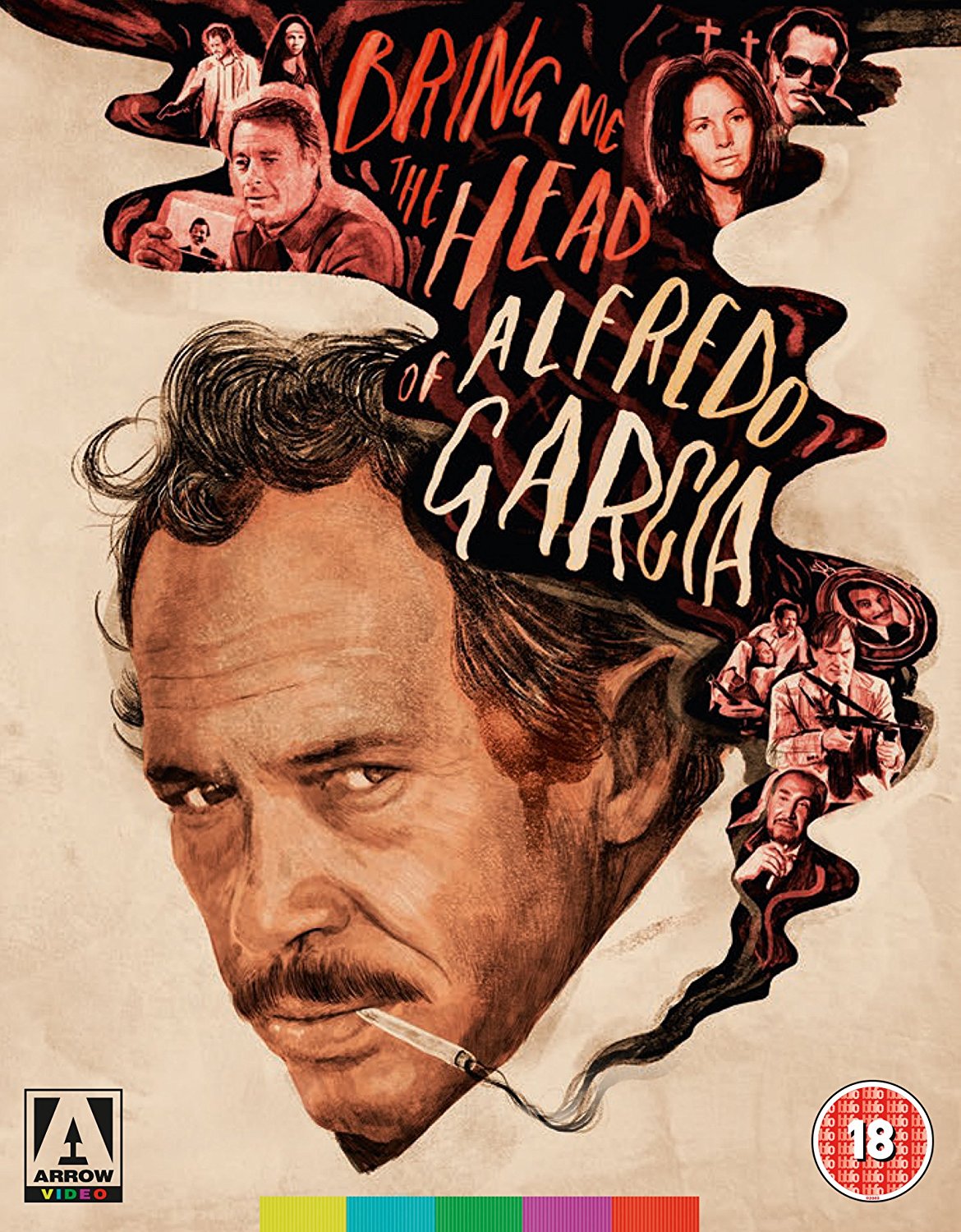 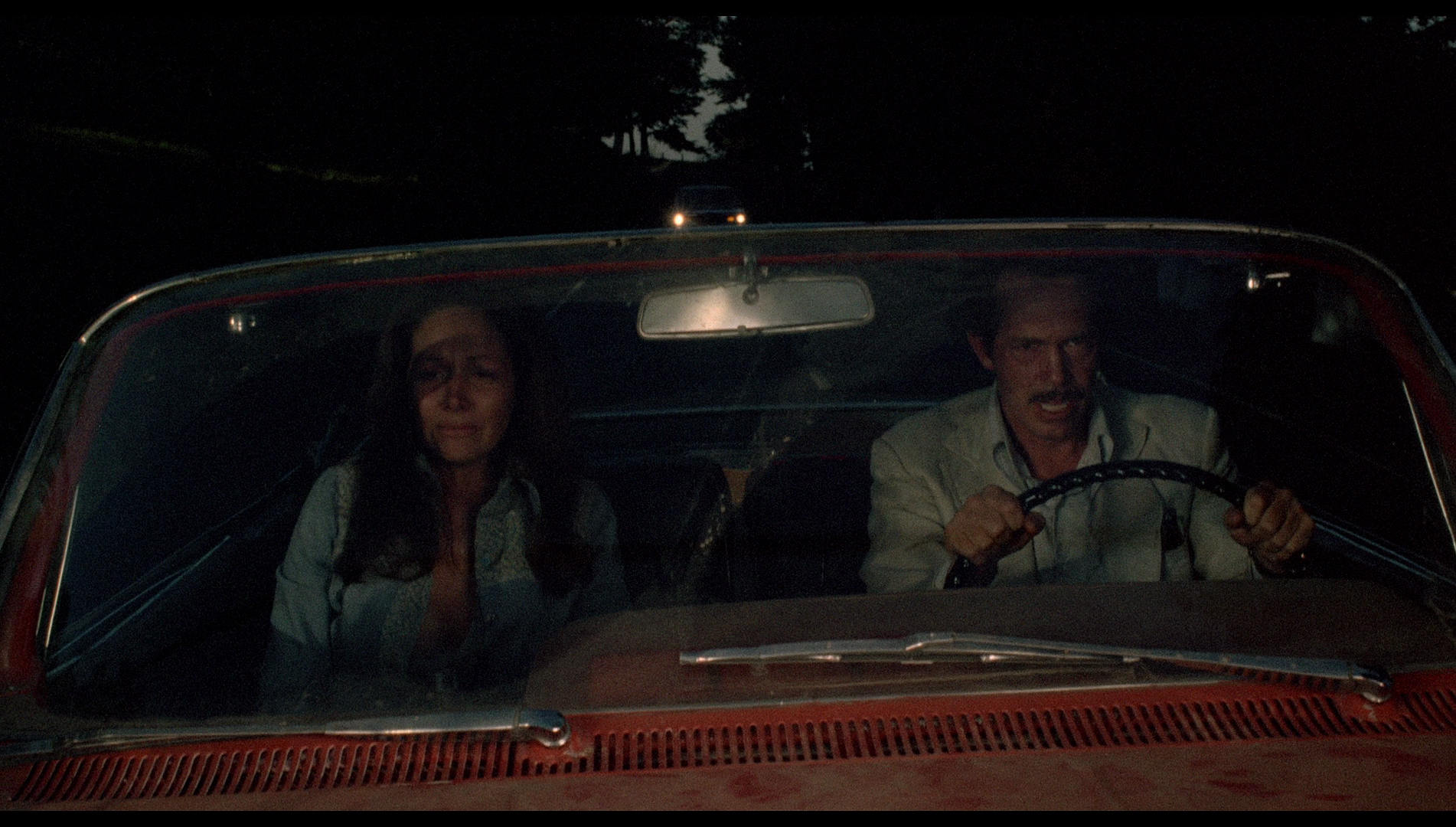 Bring Me the Head of Alfredo Garcia (Sam Peckinpah, 1974) Bring Me the Head of Alfredo Garcia (Sam Peckinpah, 1974)
In his oft-quoted interview with the New York Times in 1971, during the production of Straw Dogs (Sam Peckinpah, 1972), Sam Peckinpah famously asserted, slyly, ‘I’m like a good whore: I go where I’m kicked’ (Peckinpah, quoted in Yergin, 1971: np). The statement encapsulated, with no small degree of irony, Peckinpah’s relationship with the filmmaking process: though he was often the initiator of projects, he very rarely had final cut and almost all of his films were compromised somewhere along the line either by cuts to the budget (for example, Cross of Iron, 1977) and/or interference by money men during the post-production process (pretty much all of his films, and most famously The Wild Bunch, 1969; and Pat Garrett and Billy the Kid, 1973). Peckinpah’s self-deprecatory comment therefore spoke of the attempts that had been made (or at least, which he felt had been made) by those who financed his films to make him feel like a ‘hired gun’ via the ways in which they worked to compromise his vision. When Mexican landowner El Jefe (Emilio Fernandez) discovers that his beloved daughter Theresa (Janine Maldonado) is pregnant to the peasant class lothario Alfredo Garcia, he offers a million dollars for the man who will bring him the head of the father of his unborn grandchild. From their lush hotel, a group of shady American mercenaries – led by Max (Helmut Dantine) and including Sappensly (Robert Webber) and Quill (Gig Young) – plot to get their hands on this money by acquiring Garcia’s head. When Sappensly and Quill walk into the Tlaquepeque, a bar catering for American tourists, they encounter down-on-his-luck American piano player Bennie (Warren Oates), who has resorted himself to singing rousing anthems for the American tourists but dreams of escape. 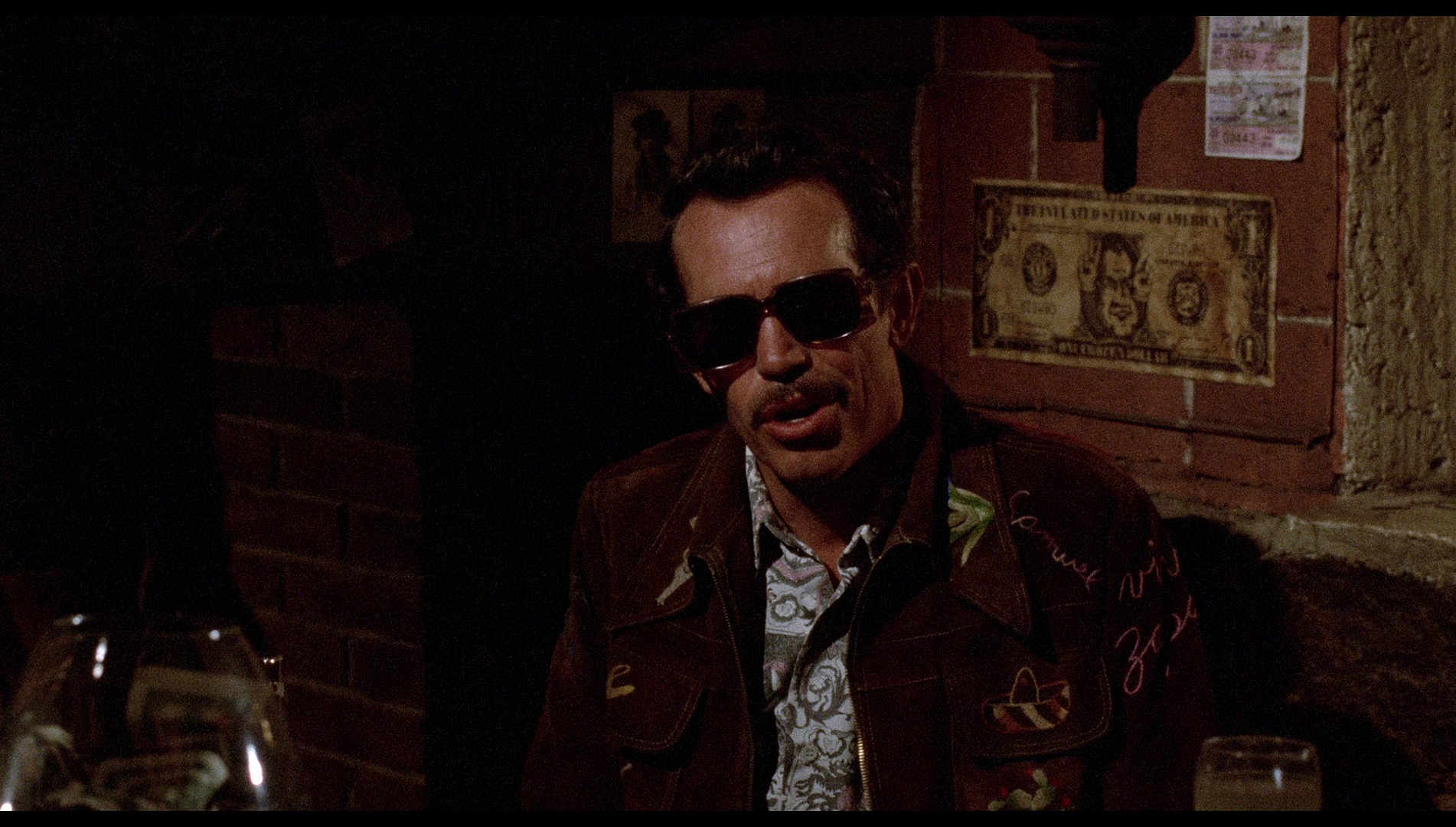 The sole pleasure in Bennie’s life seems to be his relationship with Elita (Isela Vega), a singer in a more upmarket establishment. However, Elita has in her past a relationship with the lothario Al Garcia; it’s a relationship which she has recently rekindled. When he discovers that Sappensly and Quill are looking for Garcia and want him ‘Dead. Just dead’, Bennie approaches Elita and asks after her former lover. Elita reveals that Garcia died only a few days previously, in a car crash. Bennie begins to see the acquisition of Garcia’s head, and the handsome financial reward promised to him by Sappensly and Quill, as a golden opportunity. Without revealing to Elita his intention to steal Garcia’s head from the grave, Bennie takes his lover on a trip into rural Mexico, hoping she will lead him to the cemetery in which Garcia is buried. The sole pleasure in Bennie’s life seems to be his relationship with Elita (Isela Vega), a singer in a more upmarket establishment. However, Elita has in her past a relationship with the lothario Al Garcia; it’s a relationship which she has recently rekindled. When he discovers that Sappensly and Quill are looking for Garcia and want him ‘Dead. Just dead’, Bennie approaches Elita and asks after her former lover. Elita reveals that Garcia died only a few days previously, in a car crash. Bennie begins to see the acquisition of Garcia’s head, and the handsome financial reward promised to him by Sappensly and Quill, as a golden opportunity. Without revealing to Elita his intention to steal Garcia’s head from the grave, Bennie takes his lover on a trip into rural Mexico, hoping she will lead him to the cemetery in which Garcia is buried.
The two lovers stop for a picnic, and Elita manages to tease out of Bennie a proposal of marriage; but she also discovers Bennie’s true purpose in planning the trip and is horrified. Her dreams of love are shattered further when the couple are accosted by two American bikers, one of whom (Kris Kristofferson) attempts to rape her before he is shot dead by Bennie. The cycle of violence escalates when Bennie and Elita arrive at the cemetery where Garcia is interred, and Bennie is accosted by two Mexicans who have been paid by Sappensly and Quill to follow Bennie. Bennie awakens in a shallow grave, clawing his way out of the earth, and sets out to reclaim the head of Garcia, which the two Mexicans have severed from the corpse. Bennie manages to wrestle control of Garcia’s head away from them, and becomes determined to deliver the head to the man who has requested it. But on the way, Bennie develops a strange relationship with the severed head of the man who was, in life, Bennie’s rival for the love of Elita.  Midway through the film, Bring Me the Head of Alfredo Garcia shifts gears and transitions from a modern day Western into a full-blown Gothic horror picture. Though, in truth, the film as a whole may be considered a classic, fatalistic Gothic romance. Oates claimed that the film was structured around the love affair between Bennie and Elita, ‘a Rita Hayworth figure and a down-and-out piano player’ (Oates, quoted in Compo, 2009: 284). However, for Oates the film’s depiction of this ‘idealistic relationship’ is undercut by two scenes: ‘the crab scene [in which, after spending the night with Elita, Bennie picks lice out of his pubic hair] and the rape scene [where Elita is almost raped by Kris Kristofferson’s biker]’ (Oates, quoted in ibid.). These scenes ‘shatter their harmony’ to the extent that Oates felt these two moments ‘hurt the story and I never understood it. I challenged Sam on it’ (Oates, quoted in ibid.: 285). However, one of the ‘points’ of the story is arguably the manner in which it undercuts the romance of Elita and Bennie’s relationship, refusing to represent love as an idealistic commodity: from very early in the film, knowledge of Elita’s liaison with her younger lover Al Garcia hangs over Bennie and Elita’s relationship, and during their picnic Elita essentially drags a marriage proposal out of Bennie whilst both of them cry and Jerry Fielding’s mournful score plays on the soundtrack. ‘Just being together is enough’, Elita protests when Bennie tells her he plans to retrieve Garcia’s head and sell it for money. ‘No, it’s not’, Bennie tells her bitterly, ‘It takes pan, bread, dinero’. The way in which Bennie and Elita’s relationship becomes tainted and tattered is mirrored in how soiled Bennie’s white suit becomes as the narrative progresses: the symbolism of the white suit was a deliberate choice, with Gordon Dawson stating that ‘It [the suit] would start out clean and would be cheesy enough for him, and it would be in really shitty condition by the time the picture was over’ (Dawson, quoted in Compo, op cit.: 288). Finally, when Bennie acquires the severed head of Al Garcia, he drives with it on the passenger seat of his car, talking to it and alternating between aggression and small talk – essentially bonding with what remains of the man who once shared Bennie’s true love, Elita. Midway through the film, Bring Me the Head of Alfredo Garcia shifts gears and transitions from a modern day Western into a full-blown Gothic horror picture. Though, in truth, the film as a whole may be considered a classic, fatalistic Gothic romance. Oates claimed that the film was structured around the love affair between Bennie and Elita, ‘a Rita Hayworth figure and a down-and-out piano player’ (Oates, quoted in Compo, 2009: 284). However, for Oates the film’s depiction of this ‘idealistic relationship’ is undercut by two scenes: ‘the crab scene [in which, after spending the night with Elita, Bennie picks lice out of his pubic hair] and the rape scene [where Elita is almost raped by Kris Kristofferson’s biker]’ (Oates, quoted in ibid.). These scenes ‘shatter their harmony’ to the extent that Oates felt these two moments ‘hurt the story and I never understood it. I challenged Sam on it’ (Oates, quoted in ibid.: 285). However, one of the ‘points’ of the story is arguably the manner in which it undercuts the romance of Elita and Bennie’s relationship, refusing to represent love as an idealistic commodity: from very early in the film, knowledge of Elita’s liaison with her younger lover Al Garcia hangs over Bennie and Elita’s relationship, and during their picnic Elita essentially drags a marriage proposal out of Bennie whilst both of them cry and Jerry Fielding’s mournful score plays on the soundtrack. ‘Just being together is enough’, Elita protests when Bennie tells her he plans to retrieve Garcia’s head and sell it for money. ‘No, it’s not’, Bennie tells her bitterly, ‘It takes pan, bread, dinero’. The way in which Bennie and Elita’s relationship becomes tainted and tattered is mirrored in how soiled Bennie’s white suit becomes as the narrative progresses: the symbolism of the white suit was a deliberate choice, with Gordon Dawson stating that ‘It [the suit] would start out clean and would be cheesy enough for him, and it would be in really shitty condition by the time the picture was over’ (Dawson, quoted in Compo, op cit.: 288). Finally, when Bennie acquires the severed head of Al Garcia, he drives with it on the passenger seat of his car, talking to it and alternating between aggression and small talk – essentially bonding with what remains of the man who once shared Bennie’s true love, Elita.
 Garcia is wanted by El Jefe for impregnating the landowner’s daughter Theresa. The film opens with the pregnant Theresa sitting on a riverbank. She is surrounded by wildlife, and the wind calmly ruffles the surface of the water. It’s an idyllic scenario that is swiftly undercut when Theresa’s father’s goons arrive behind her, their presence signaled by the jangling of their spurs. ‘Your father wants you immediately’, Theresa is told. She is escorted to her father’s study, where surrounded by men of the clergy El Jefe reads from the Bible in Latin, the camera lingering on saintly painted portraits that decorate the walls. As Theresa is brought before her father, her top ripped by El Jefe’s goons to expose her breasts and humiliate her, the viewer might be reminded of the trend in the early 1970s for European exploitation films to focus on the Inquisition and the persecution of heretics by men of the cloth (for example, Michael Armstrong’s Mark of the Devil, 1970; or Jesus Franco’s Les démons, 1973). ‘Who is the father?’, El Jefe demands before encouraging one of his hired hands to bend Theresa’s arm behind her back; Peckinpah cuts to an exterior shot of the building as we hear the bone snap and Theresa cries out the name of her unborn son’s father. ‘He was like a son to me’, El Jefe laments before asserting angrily – in Spanish first, then in English – ‘Bring me the head of Alfredo Garcia!’ Garcia is wanted by El Jefe for impregnating the landowner’s daughter Theresa. The film opens with the pregnant Theresa sitting on a riverbank. She is surrounded by wildlife, and the wind calmly ruffles the surface of the water. It’s an idyllic scenario that is swiftly undercut when Theresa’s father’s goons arrive behind her, their presence signaled by the jangling of their spurs. ‘Your father wants you immediately’, Theresa is told. She is escorted to her father’s study, where surrounded by men of the clergy El Jefe reads from the Bible in Latin, the camera lingering on saintly painted portraits that decorate the walls. As Theresa is brought before her father, her top ripped by El Jefe’s goons to expose her breasts and humiliate her, the viewer might be reminded of the trend in the early 1970s for European exploitation films to focus on the Inquisition and the persecution of heretics by men of the cloth (for example, Michael Armstrong’s Mark of the Devil, 1970; or Jesus Franco’s Les démons, 1973). ‘Who is the father?’, El Jefe demands before encouraging one of his hired hands to bend Theresa’s arm behind her back; Peckinpah cuts to an exterior shot of the building as we hear the bone snap and Theresa cries out the name of her unborn son’s father. ‘He was like a son to me’, El Jefe laments before asserting angrily – in Spanish first, then in English – ‘Bring me the head of Alfredo Garcia!’
Famously, Bring Me the Head of Alfredo Garcia was often cited by Peckinpah as the only film of his on which he had full creative control, including over the final cut of the picture. (According to popular rumour, Peckinpah also hoped for the film to receive a ‘PG’ rating from the MPAA, though even a cursory glance at the synopsis above would suggest that was little more than a pipe dream.) However, Peckinpah’s vision was also expressed in a relatively undiluted form in The Ballad of Cable Hogue (1970), Junior Bonner (1972) and Straw Dogs (1972). Nevertheless, Bring Me the Head of Alfredo Garcia is usually cited as Peckinpah’s most ‘personal’ film, and it’s a picture which has occasionally been read as partly autobiographical – in a metaphoric sense, of course. 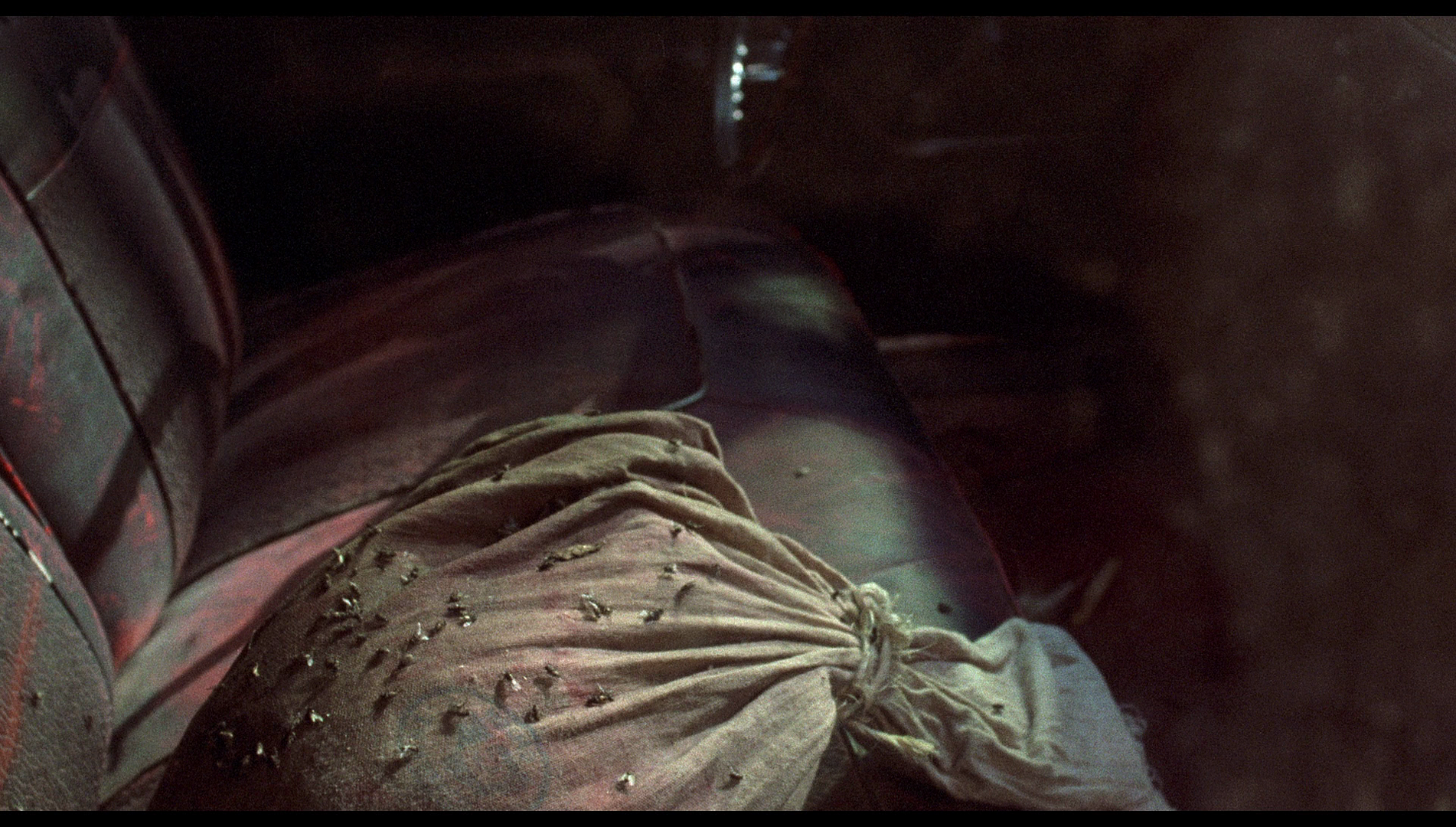 Like Peckinpah’s other two most ‘personal’ films (The Ballad of Cable Hogue and Junior Bonner, and the much less ‘personal’ The Killer Elite, 1975), Bring Me the Head of Alfredo Garcia featured script input from Frank Kowalski. In fact, the film’s script originated in a ‘story’ by Kowalski, which by most accounts amounted to Kowalski coming up with the title and the suggestion that Al Garcia was already dead. Peckinpah and Kowalski put together a twenty page treatment for the film, and during this process Peckinpah reputedly wrote with Lee Marvin in mind for the role of Bennie and Jane Fonda in mind for the role of Bennie’s lover (Compo, 2009: 274). Screenwriter Walter Kelley was approached to write the script but left the project part-way through, and Peckinpah finished the script with Gordon Dawson (ibid.: 274-5). Dawson had worked as a wardrobe supervisor on a number of Westerns, including Peckinpah’s The Wild Bunch, but had aspirations of becoming a writer; though Dawson had already contributed to the script of The Ballad of Cable Hogue, Bring Me the Head of Alfredo Garcia was Dawson’s first credited writing gig for a feature film. Dawson later asserted ‘I just wrote tongue-in-cheek Peckinpah. I wrote Sam. How can I drag this guy through every toilet in Mexico? I knew Mexico and I knew Sam, and I knew how much Sam loved Mexico. And I knew what Sam liked about Mexico, so I just put it all in there’ (Dawson, quoted in ibid.). The finished script left both James Coburn and Peter Falk, to whom Peckinpah showed the film’s script, repulsed (ibid.). Finally, Peckinpah approached Warren Oates with the script. Like Peckinpah’s other two most ‘personal’ films (The Ballad of Cable Hogue and Junior Bonner, and the much less ‘personal’ The Killer Elite, 1975), Bring Me the Head of Alfredo Garcia featured script input from Frank Kowalski. In fact, the film’s script originated in a ‘story’ by Kowalski, which by most accounts amounted to Kowalski coming up with the title and the suggestion that Al Garcia was already dead. Peckinpah and Kowalski put together a twenty page treatment for the film, and during this process Peckinpah reputedly wrote with Lee Marvin in mind for the role of Bennie and Jane Fonda in mind for the role of Bennie’s lover (Compo, 2009: 274). Screenwriter Walter Kelley was approached to write the script but left the project part-way through, and Peckinpah finished the script with Gordon Dawson (ibid.: 274-5). Dawson had worked as a wardrobe supervisor on a number of Westerns, including Peckinpah’s The Wild Bunch, but had aspirations of becoming a writer; though Dawson had already contributed to the script of The Ballad of Cable Hogue, Bring Me the Head of Alfredo Garcia was Dawson’s first credited writing gig for a feature film. Dawson later asserted ‘I just wrote tongue-in-cheek Peckinpah. I wrote Sam. How can I drag this guy through every toilet in Mexico? I knew Mexico and I knew Sam, and I knew how much Sam loved Mexico. And I knew what Sam liked about Mexico, so I just put it all in there’ (Dawson, quoted in ibid.). The finished script left both James Coburn and Peter Falk, to whom Peckinpah showed the film’s script, repulsed (ibid.). Finally, Peckinpah approached Warren Oates with the script.
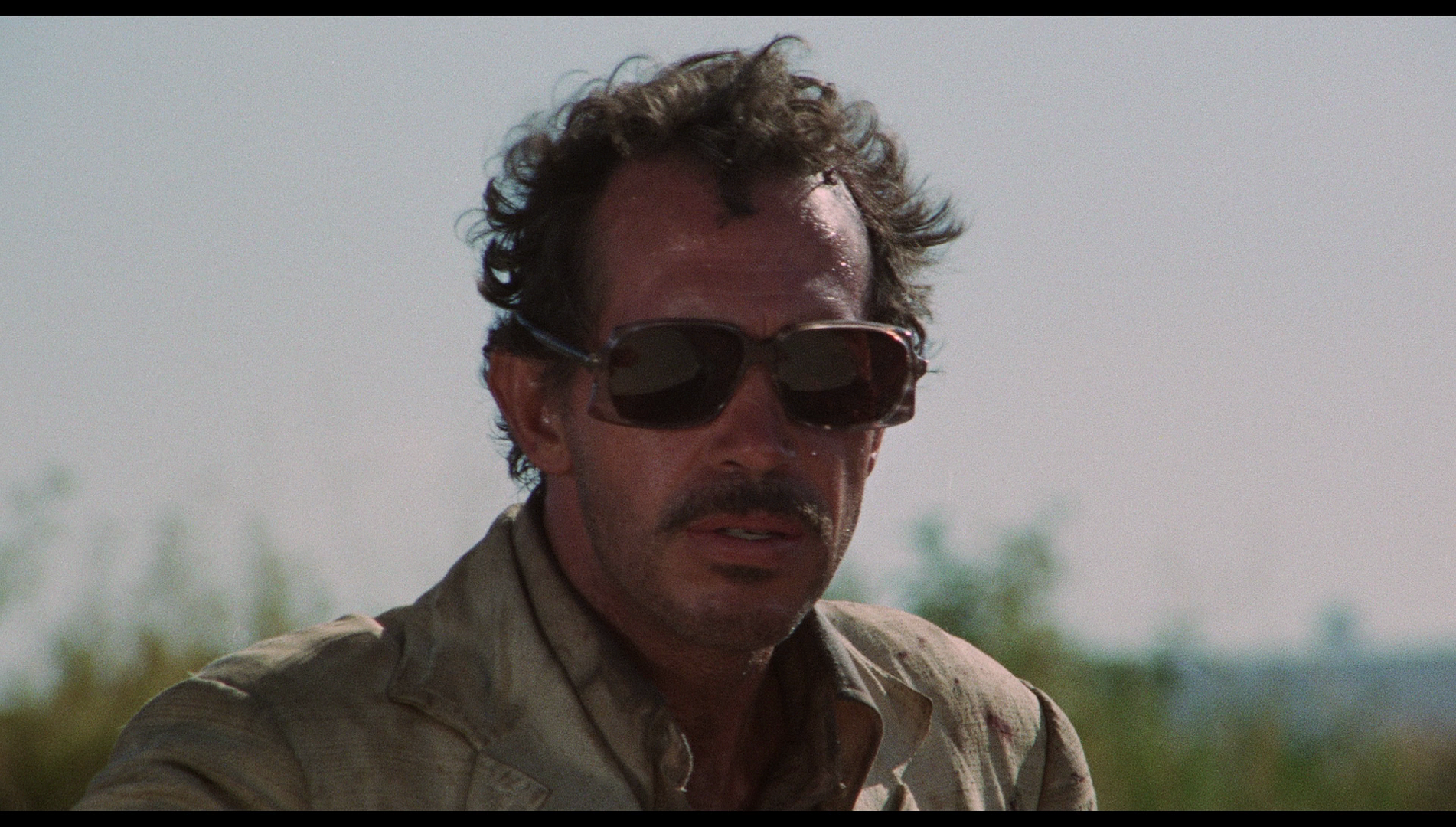 Peckinpah’s feelings about his own art seem to be embodied in the film’s protagonist, Bennie, played by Warren Oates in a performance reputedly modeled on Peckinpah’s own behaviour. ‘I really tried to do Sam Peckinpah’, Oates later explained in reference to his performance, ‘as much as I knew about him, his mannerisms and everything he did’ (Oates, quoted in ibid.: 279). Like Peckinpah, Bennie is a man who goes where he is kicked, a man who is no stranger to the necessity of compromise. He is introduced playing ‘Guantanamera’ to American tourists in the Tlaquapeque, a sleazy Mexican bar in which local prostitutes ply their trade to outsiders. Bennie’s smile is broad, his piano playing is sufficiently plinky-plonky, and his singing voice is loud; but the dark glasses he wears, which make his eyes unreadable, speak of how soul-destroying this work is for him and how performative his role as the bar’s ‘entertainment’ is. When these tourists have gone, Bennie briefly allows what seems like his true personality to seep through: cynical and disillusioned, he checks his watch. It’s a subtle, fleeting gesture but one that hints at a query any wage slave can relate to: how long have I got left until my shift ends and I can go home to drown my sorrows? That is, until what seems like another pair of American tourists enter the bar: these two men are, of course, Quill and Sappensly, on the hunt for information about Al Garcia’s whereabouts. Peckinpah’s feelings about his own art seem to be embodied in the film’s protagonist, Bennie, played by Warren Oates in a performance reputedly modeled on Peckinpah’s own behaviour. ‘I really tried to do Sam Peckinpah’, Oates later explained in reference to his performance, ‘as much as I knew about him, his mannerisms and everything he did’ (Oates, quoted in ibid.: 279). Like Peckinpah, Bennie is a man who goes where he is kicked, a man who is no stranger to the necessity of compromise. He is introduced playing ‘Guantanamera’ to American tourists in the Tlaquapeque, a sleazy Mexican bar in which local prostitutes ply their trade to outsiders. Bennie’s smile is broad, his piano playing is sufficiently plinky-plonky, and his singing voice is loud; but the dark glasses he wears, which make his eyes unreadable, speak of how soul-destroying this work is for him and how performative his role as the bar’s ‘entertainment’ is. When these tourists have gone, Bennie briefly allows what seems like his true personality to seep through: cynical and disillusioned, he checks his watch. It’s a subtle, fleeting gesture but one that hints at a query any wage slave can relate to: how long have I got left until my shift ends and I can go home to drown my sorrows? That is, until what seems like another pair of American tourists enter the bar: these two men are, of course, Quill and Sappensly, on the hunt for information about Al Garcia’s whereabouts.
From the moment that Quill and Sappensly enter The Tlaquapeque together, ambiguity surrounds their relationship. Whilst they talk with Bennie at his piano, they are approached by two local prostitutes. ‘Something for the ladies?’, Bennie asks, hoping to entice the two strangers to spend more money on drinks. ‘Burro piss’, Quill responds without an ounce of humour. One of the women puts her hand on Sappensly’s thigh and, in Spanish, asks him ‘Do you want to be with me?’ Sappensly tolerates this for a second before hitting the prostitute in the face with his elbow, knocking her out cold. She falls to the floor. Nobody challenges him. The moment establishes the extent to which in the Tlaquapeque at least, money talks: the American stranger’s violence towards the woman is tolerated because he and his friend have money, and presumably also because the woman is of low status. It also hints at a suggestion that Quill and Sappensly are involved in a homosexual relationship with one another, something that seems to be confirmed towards the end of the film when Quill is killed by a group of locals and Sappensly lets out an animalistic cry before attempting to take violent revenge. 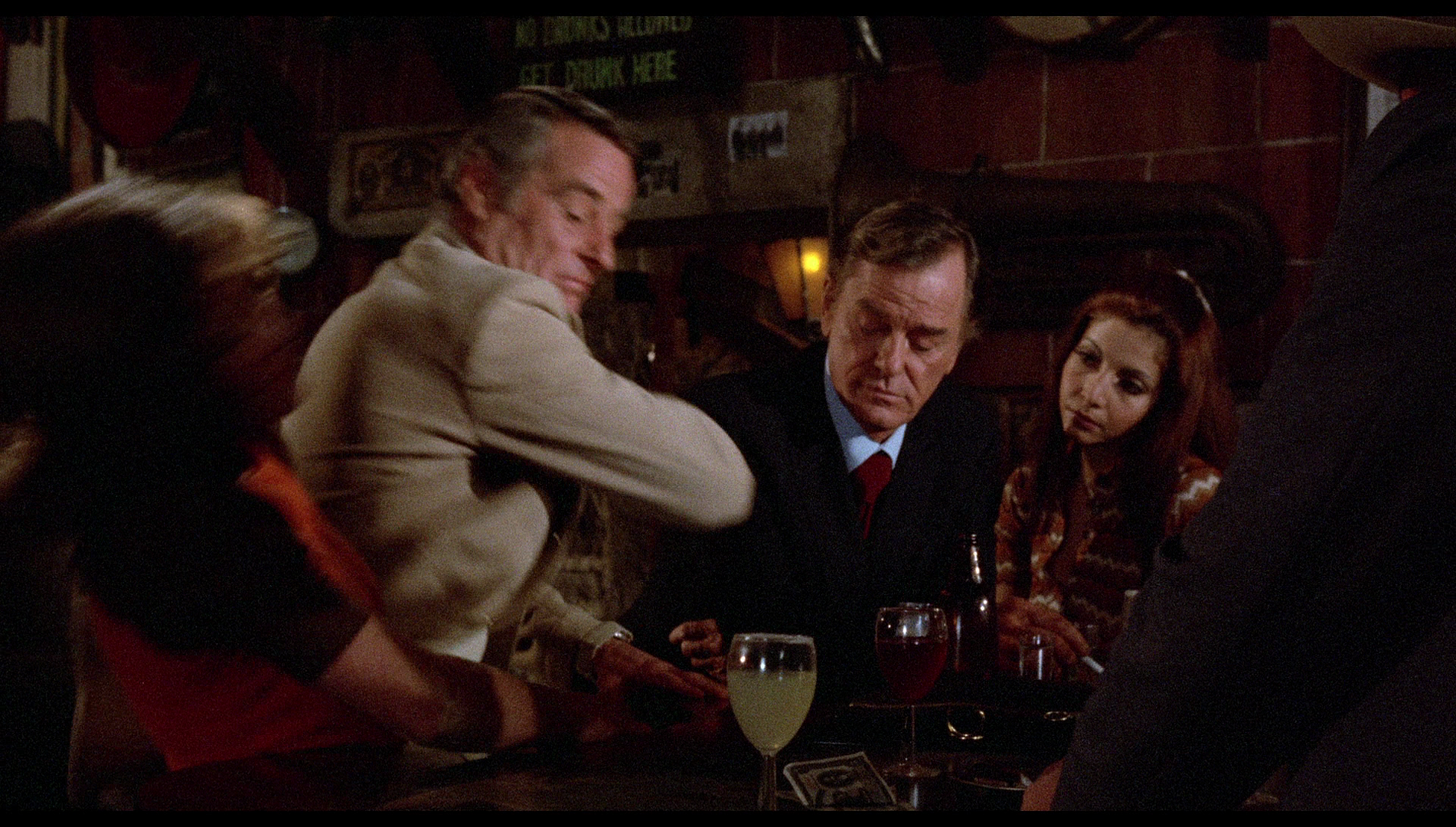 In this scene, Bennie makes a Faustian pact, selling his soul for an exchange of money. As soon as Quill and Sappensly enter the Tlaquapeque, they approach Bennie’s piano and hand over some paper dollars. ‘Take me to your leader’, Bennie says in response to the sight of the money. The strangers ask about Al Garcia, questioning Bennie if he knows the name. ‘Sure, it’s like Jones or Smith’, Bennie jokes. However, his attempts at levity are not met with kind by the two outsiders. ‘Don’t worry, if he’s alive I’ll find him’, Bennie adds. ‘Alive isn’t our problem’, Sappensly suggest. ‘Well, er, how about dead or alive? How about that?’, Bennie asks, again attempting to make a joke. ‘Dead. Just dead’, Quill responds with the flat tones of a true sociopath. In this scene, Bennie makes a Faustian pact, selling his soul for an exchange of money. As soon as Quill and Sappensly enter the Tlaquapeque, they approach Bennie’s piano and hand over some paper dollars. ‘Take me to your leader’, Bennie says in response to the sight of the money. The strangers ask about Al Garcia, questioning Bennie if he knows the name. ‘Sure, it’s like Jones or Smith’, Bennie jokes. However, his attempts at levity are not met with kind by the two outsiders. ‘Don’t worry, if he’s alive I’ll find him’, Bennie adds. ‘Alive isn’t our problem’, Sappensly suggest. ‘Well, er, how about dead or alive? How about that?’, Bennie asks, again attempting to make a joke. ‘Dead. Just dead’, Quill responds with the flat tones of a true sociopath.
When Bennie visits Quill, Sappensly, Max and the other Americanos at their hotel room in Mexico City, he is faced with a very different environment. The hotel room offers a stark contrast to the poverty of the spaces in which Bennie lives and works – the tacky Tlaquapeque bar and the rooms in which Bennie resides. The luxurious trappings of the hotel room rented by the Americans reinforces the extent to which Bennie’s deal with this group is framed as a Faustian pact – Bennie selling his soul in exchange for the almighty dollar. In meeting the Americans in this space and agreeing to commit what Elita will later remind him is a sin (the desecration of Garcia’s grave), Bennie is seduced by luxury and the decadence of the Americans’ surroundings. (Later, we are shown Max being tended to by a Mexican girl, who is giving him a pedicure.) 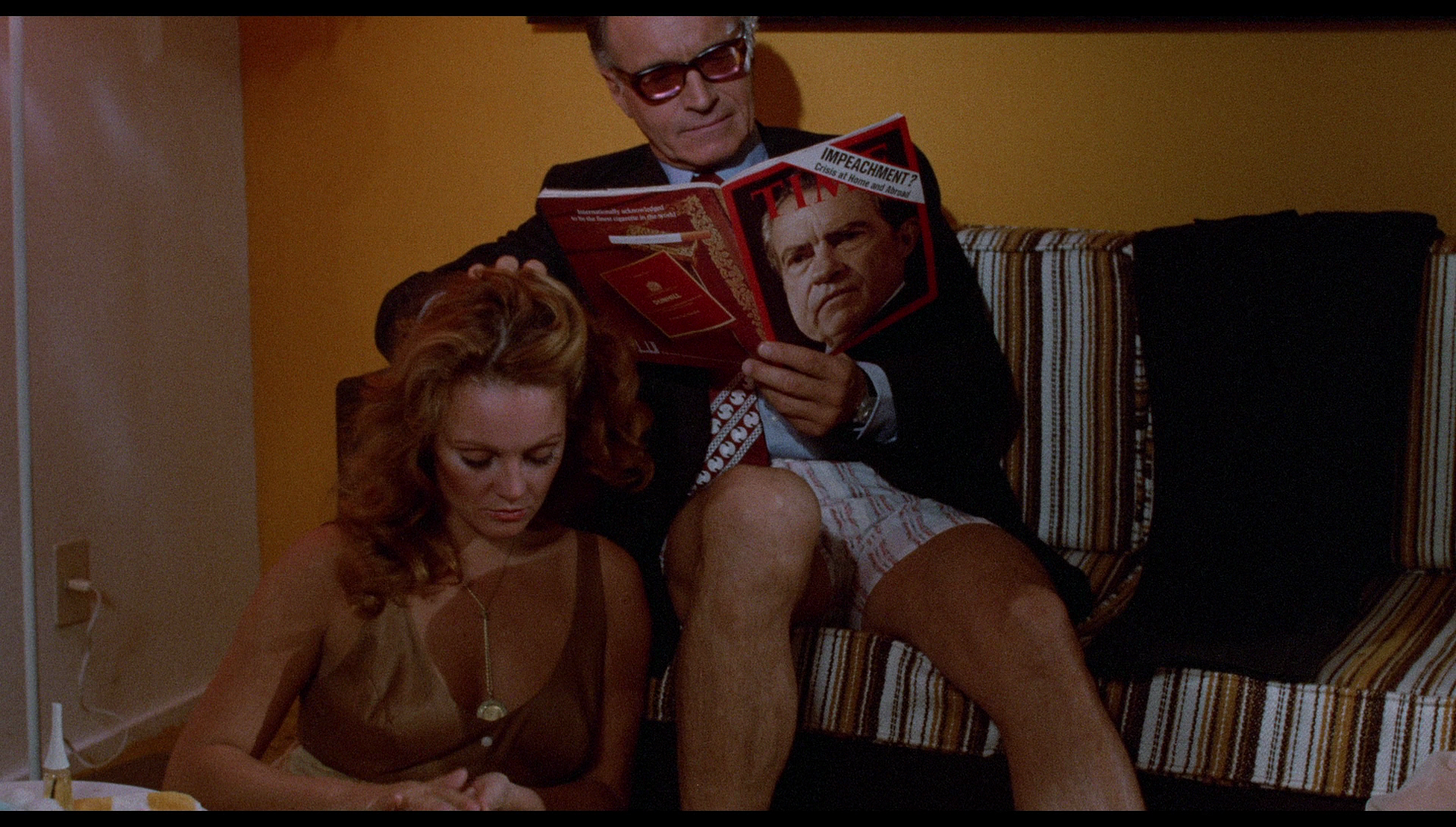 It’s unclear who these Americans are exactly. Certainly, they are willing to work for money, selling their services to El Jefe in exchange for access to the million dollars. When Bennie confronts them in the same hotel room at the climax of the film, Max (receiving the aforementioned pedicure) is reading an issue of Time magazine on which the cover image is a large portrait of Richard Nixon and the main story is the story of Nixon’s impeachment. The very deliberate inclusion of this item within the mise-en-scène anchors the narrative as taking place in the post-Watergate era, and perhaps suggests that Max and his compadres work for the American government, possibly operating within the CIA. Certainly, the fact that Max is reading this magazine hints subtly at the fact that Max and his group, whoever they represent and are affiliated with, are corrupt, operating more like gangsters than anything else. The ambiguity surrounding their role and their reasons for operating out of a hotel room in Mexico City is underscored by the fact that, when in the Tlaquapeque Bennie asks Quill what his name is, Quill responds by telling Bennie he is ‘Dobbs. Fred C Dobbs’. The name, of course, is a false one, and an allusion to the character played by Humphrey Bogart in John Huston’s The Treasure of the Sierra Madre (1948): an American who, living in poverty in Mexico, sees the opportunity to take part in a prospecting opportunity as a golden one (if you will pardon the pun) but finds that it leads him on a path of madness and betrayal. The parallels with Bennie’s story are obvious. It’s unclear who these Americans are exactly. Certainly, they are willing to work for money, selling their services to El Jefe in exchange for access to the million dollars. When Bennie confronts them in the same hotel room at the climax of the film, Max (receiving the aforementioned pedicure) is reading an issue of Time magazine on which the cover image is a large portrait of Richard Nixon and the main story is the story of Nixon’s impeachment. The very deliberate inclusion of this item within the mise-en-scène anchors the narrative as taking place in the post-Watergate era, and perhaps suggests that Max and his compadres work for the American government, possibly operating within the CIA. Certainly, the fact that Max is reading this magazine hints subtly at the fact that Max and his group, whoever they represent and are affiliated with, are corrupt, operating more like gangsters than anything else. The ambiguity surrounding their role and their reasons for operating out of a hotel room in Mexico City is underscored by the fact that, when in the Tlaquapeque Bennie asks Quill what his name is, Quill responds by telling Bennie he is ‘Dobbs. Fred C Dobbs’. The name, of course, is a false one, and an allusion to the character played by Humphrey Bogart in John Huston’s The Treasure of the Sierra Madre (1948): an American who, living in poverty in Mexico, sees the opportunity to take part in a prospecting opportunity as a golden one (if you will pardon the pun) but finds that it leads him on a path of madness and betrayal. The parallels with Bennie’s story are obvious.
The men use the carrot and stick method to tempt Bennie into co-operating with them. They offer him a cool thousand dollars for information leading them to Garcia. However, as Quill reminds Bennie, ‘If the information is wrong, you too are wrong. Dead wrong’. Max reminds Bennie of what has tempted him to visit the hotel room: ‘You’re interested in money, aren’t you?’, Max asks sweetly, his voice that of the great tempter, ‘Money you can spend?’ ‘Yes, sir. Indirectly’, Bennie says in response, ‘I mean, there are other things – like I’d like to stay alive’, he jokes. ‘A loser’, a younger man asserts, turning his head from Bennie dismissively. ‘Nobody loses all the time’, Bennie barks back angrily, in one of the film’s most famous lines. His anger piqued, Bennie raises the stakes of the game and offers the men a greater portion of his soul in exchange for a larger sum of money, suggesting that he will kill Garcia (who, based on Elita’s information, he knows is already dead): ‘For ten thousand dollars, I go all the way or I pass’. ‘We’re prepared to settle for his head’, the slimy young man asserts. 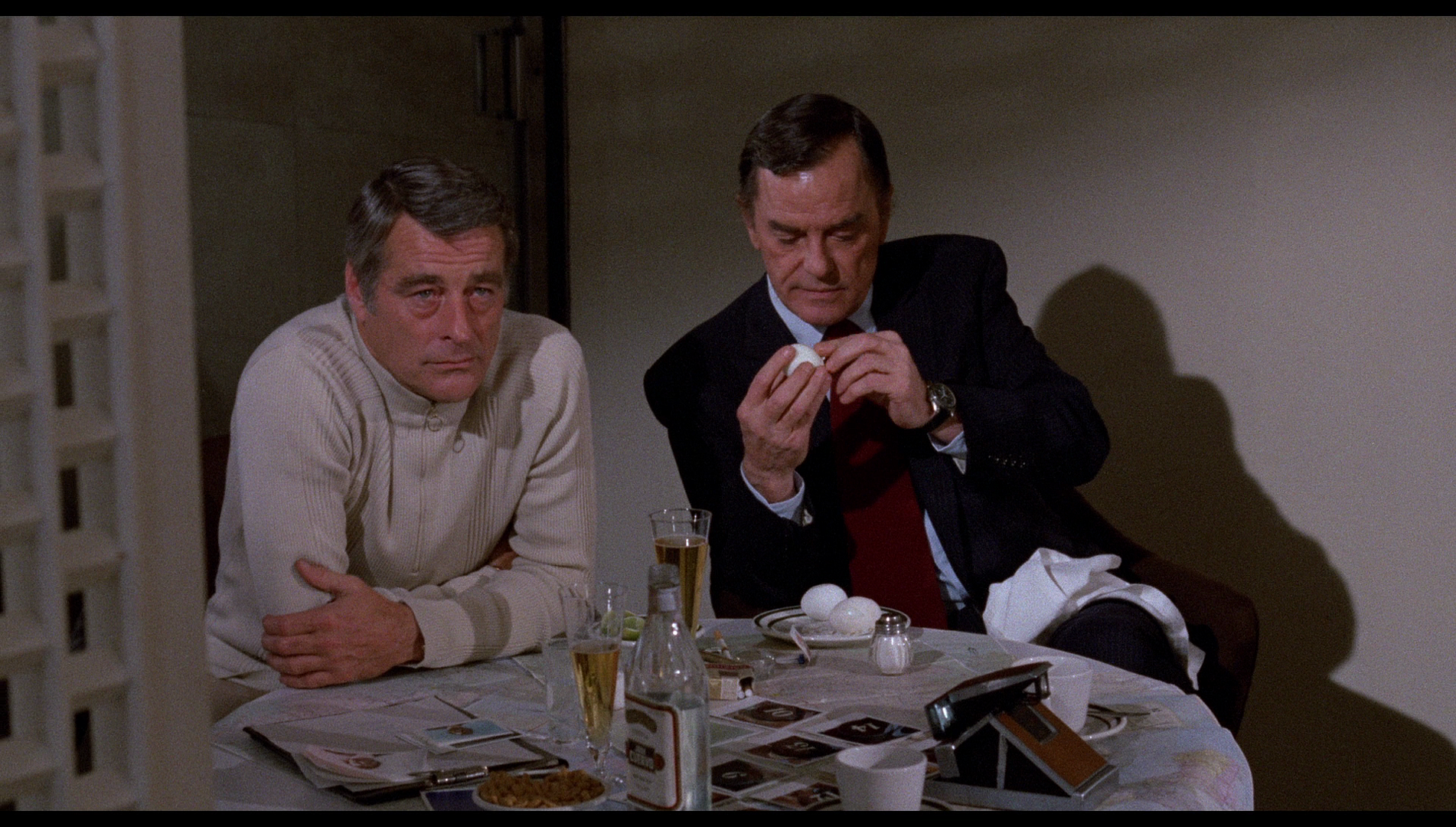 ‘I’m gonna find a golden fleece’, Bennie tells Elita later: Garcia’s head represents to him the prospect of escape. ‘Hell, I’ve never been in any place I’d like to go back to, that’s for sure’, he says, adding, ‘This time I’m moving up’. Unaware at this juncture that Bennie’s ‘golden fleece’ is the severed head of her former lover, Elita is simply concerned that the couple remain together: ‘Most important, at least to me, is we’re together […] and we’ll marry someday’, she asserts. When Bennie reveals something of the nature of his plan, Elita tells him ‘I don’t want any part of that’. ‘You are a part of it’, Bennie tells her, persuading her to come with him and accept his plan, ‘For you or for me. Or do it for Al. He wants you to be happy, doesn’t he?’ Later, after Elita has been assaulted by the biker and Bennie has drawn first blood, killing both the biker and his friend, Bennie reveals the extent of his plan to his lover. ‘You’re going to take me to find Alfredo’, Bennie commands, ‘and that’s our ticket out of here’. For Bennie, Mexico – and his own life – is a purgatory that he is desperate to flee. ‘Jesus’, Elita exclaims, ‘I don’t know how you can get money from a dead body’. ‘I’ll take ‘em proof. His head’, Bennie tells her. ‘But it’s a crime, Bennie’, Elita cries, ‘You’re mad’. ‘He’s dead’, Bennie reminds her, ‘Shut up!’ ‘But you want me to desecrate the grave’, Elita protests. ‘Don’t give me that crap’, Bennie spits back at her before launching into a justification of his actions that challenges her spirituality and is defiantly materialist: ‘There’s nothing sacred about a hole in the ground, or the man that’s in it. Or you, or me! Listen, the church cuts off the fingers… any other goddamn thing from the saints, don’t they? Well, what the hell? Alfredo’s our saint. He’s the saint of our money, and I wanna borrow a piece of him’. Later, at the cemetery Bennie revisits this topic: ‘Alfredo’s been trying to beat this rap all his life’, he says to Elita, ‘So have I, so have you [….] Think he’d give a damn if his head could buy you what you’ve always been looking for?’ ‘I’m gonna find a golden fleece’, Bennie tells Elita later: Garcia’s head represents to him the prospect of escape. ‘Hell, I’ve never been in any place I’d like to go back to, that’s for sure’, he says, adding, ‘This time I’m moving up’. Unaware at this juncture that Bennie’s ‘golden fleece’ is the severed head of her former lover, Elita is simply concerned that the couple remain together: ‘Most important, at least to me, is we’re together […] and we’ll marry someday’, she asserts. When Bennie reveals something of the nature of his plan, Elita tells him ‘I don’t want any part of that’. ‘You are a part of it’, Bennie tells her, persuading her to come with him and accept his plan, ‘For you or for me. Or do it for Al. He wants you to be happy, doesn’t he?’ Later, after Elita has been assaulted by the biker and Bennie has drawn first blood, killing both the biker and his friend, Bennie reveals the extent of his plan to his lover. ‘You’re going to take me to find Alfredo’, Bennie commands, ‘and that’s our ticket out of here’. For Bennie, Mexico – and his own life – is a purgatory that he is desperate to flee. ‘Jesus’, Elita exclaims, ‘I don’t know how you can get money from a dead body’. ‘I’ll take ‘em proof. His head’, Bennie tells her. ‘But it’s a crime, Bennie’, Elita cries, ‘You’re mad’. ‘He’s dead’, Bennie reminds her, ‘Shut up!’ ‘But you want me to desecrate the grave’, Elita protests. ‘Don’t give me that crap’, Bennie spits back at her before launching into a justification of his actions that challenges her spirituality and is defiantly materialist: ‘There’s nothing sacred about a hole in the ground, or the man that’s in it. Or you, or me! Listen, the church cuts off the fingers… any other goddamn thing from the saints, don’t they? Well, what the hell? Alfredo’s our saint. He’s the saint of our money, and I wanna borrow a piece of him’. Later, at the cemetery Bennie revisits this topic: ‘Alfredo’s been trying to beat this rap all his life’, he says to Elita, ‘So have I, so have you [….] Think he’d give a damn if his head could buy you what you’ve always been looking for?’
 Bennie’s monologue draws out the film’s subtle contrast of the dogmatism of faith, established in the opening sequence with the association of El Jefe with the recitation of the passage from the Bible and the men of faith – their association with this landowning gangster patriarch suggesting that they can be ‘bought’ as easily as the American mercenaries – and the materialism espoused by Bennie. Peckinpah presents neither position admirably, finding something positive instead in the solidarity of the members of Garcia’s family – who band together to retrieve their relative’s severed head and return it to the grave, and who are decimated by Quill – who shoots at them with a submachine gun in a shot that Peckinah presents in slow-motion to represent for the audience the contorted smile on the face of the Quill as he mows down old men, young men and women alike. Bennie’s monologue draws out the film’s subtle contrast of the dogmatism of faith, established in the opening sequence with the association of El Jefe with the recitation of the passage from the Bible and the men of faith – their association with this landowning gangster patriarch suggesting that they can be ‘bought’ as easily as the American mercenaries – and the materialism espoused by Bennie. Peckinpah presents neither position admirably, finding something positive instead in the solidarity of the members of Garcia’s family – who band together to retrieve their relative’s severed head and return it to the grave, and who are decimated by Quill – who shoots at them with a submachine gun in a shot that Peckinah presents in slow-motion to represent for the audience the contorted smile on the face of the Quill as he mows down old men, young men and women alike.
As the film moves into the cemetery, it transitions into full-blown Gothic horror when Bennie stands over the grave of Garcia and prepares to remove the head with his machete. He is hit over the head with a shovel by an unseen assailant, and the film adopts Bennie’s subjective perception and fades to black, fading in on the sight of Bennie clawing his way out of the earth, his hand reaching out of the grave in what Alex Cox suggested in his introduction to the film on BBC2’s Moviedrome was an obvious pastiche of the moment in the famous dream sequence from Luis Bunuel’s Los Olvidados (1960) in which a distended arm appears from under a bed to grab a piece of meat. The image of Bennie clawing his way out of the grave is an obvious symbol of rebirth, with Bennie returning from the dead to begin a new journey with the severed head of Alfredo Garcia – which is the inverse of the journey he has to that point taken with Elita at his side – that will culminate in Bennie allying himself with his now deceased lover’s deceased lover and seeking revenge against those who have hired him to retrieve the trophy.  From this point onwards, Bennie functions essentially as one of the living dead; upon discovering that his assailants have killed Elita, he howls with agony, rolling her body over so it lies on top of Garcia’s headless corpse and suggesting that the two are in the right position to practice the activity (fucking) which defined their relationship. (The nightmarish elements of this scene are amplified by Oates’ slightly ‘off’ performance, which it has been suggested was a product of Oates deliberately taking hallucinogenic mushrooms prior to the commencement of filming.) The uncomfortable association of sex with death in this grim scene led to the erroneous suggestion, in some contemporaneous reviews, that Bennie engaged in an act of necrophilia with Elita’s body; these reviews led to apocryphal rumours that somewhere along the line, material had been cut from this scene, and these rumours persisted into the Internet age. From this point onwards, Bennie functions essentially as one of the living dead; upon discovering that his assailants have killed Elita, he howls with agony, rolling her body over so it lies on top of Garcia’s headless corpse and suggesting that the two are in the right position to practice the activity (fucking) which defined their relationship. (The nightmarish elements of this scene are amplified by Oates’ slightly ‘off’ performance, which it has been suggested was a product of Oates deliberately taking hallucinogenic mushrooms prior to the commencement of filming.) The uncomfortable association of sex with death in this grim scene led to the erroneous suggestion, in some contemporaneous reviews, that Bennie engaged in an act of necrophilia with Elita’s body; these reviews led to apocryphal rumours that somewhere along the line, material had been cut from this scene, and these rumours persisted into the Internet age.
When Bennie emerges from the cemetery, his is utterly unhinged. He mutters angrily to himself (‘Come out of the dark on me, you bastards! [….] Damn your eyes. God, let me see that green station wagon!’), and when he encounters the two Mexicans who accosted him and who stole Garcia’s head, he kills them. Bennie’s violence becomes overkill when he empties his pistol into one of the men’s corpses: it is a futile gesture, unmotivated other than by the desire to enact violence. ‘Why?’, Bennie asks himself aloud before answering, ‘Because it feels so goddamn good’. Bennie retrieves the head and dumps it in the passenger seat of his car, conversing with it as flies gather in the vehicle. ‘Sorry, Al’, Bennie asserts as he stops the car abruptly for a farmer and his cattle. ‘What’s so special about you, huh?’, he asks the head, ‘You got jewels in your ears? Diamonds up your nose? You son of a bitch [….] It wasn’t worth her. I’ll be damned if she isn’t keeping the best part of you company, you low-life bastard’. By the time he stops at a local village and asks for some ice to pack around Garcia’s head to slow down the process of decomposition, Bennie has become apologetic and even makes a pact with his dead love rival: ‘Hell, it wasn’t your fault’, he says to the head, ‘I know that. We’re gonna find out. You and me’. 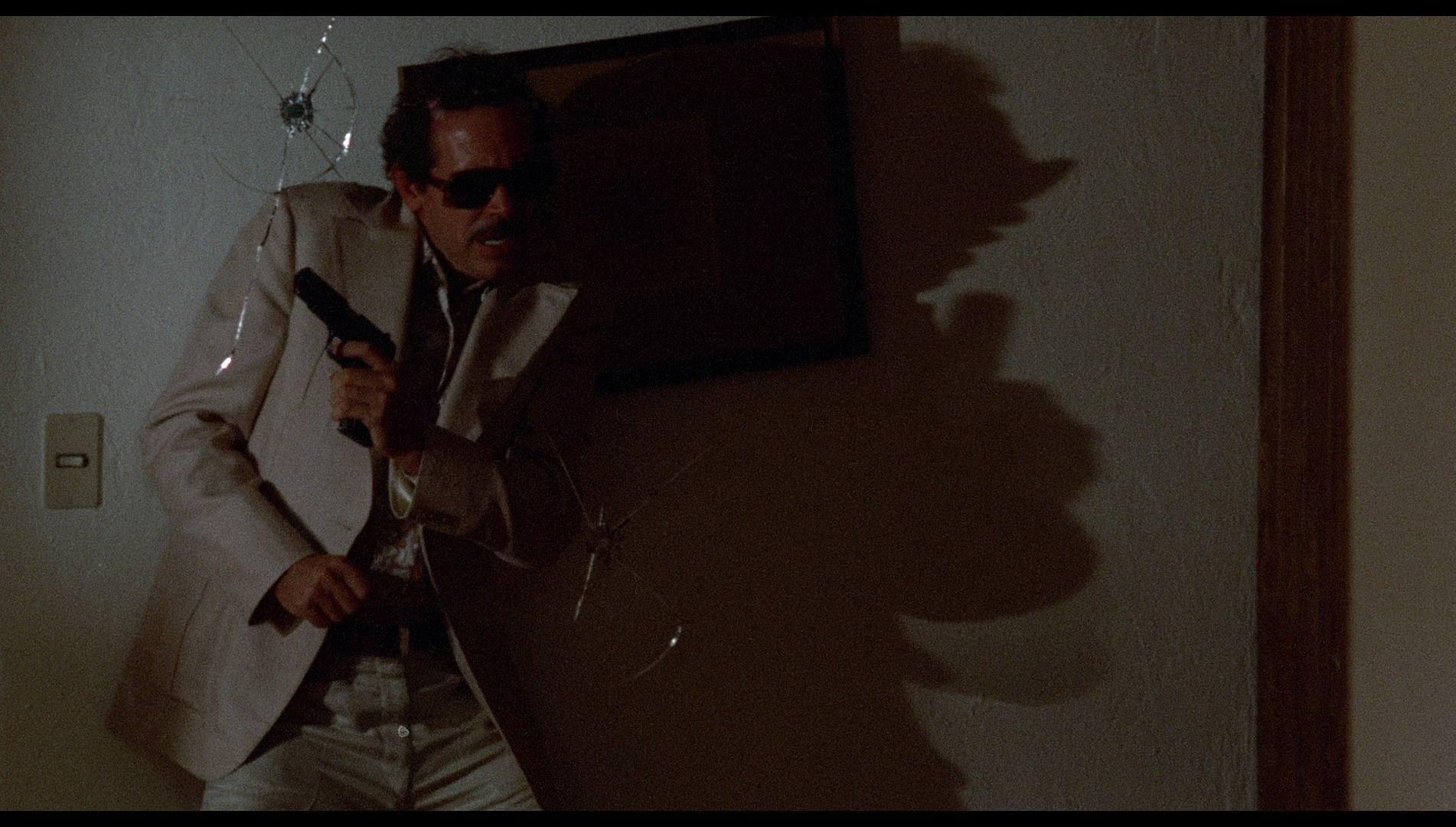 Towards the end of the film, Bennie returns home with the head before taking it to the Americans who have hired him. He stops in front of a mirror, looking at his own reflection. He takes his sunglasses off, very briefly, and seems almost afraid to look at his own reflection. Filled with shame and self-loathing, he turns away quickly and replaces his sunglasses. The mirror motif, a long-standing one in Peckinpah’s films (think of William Holden being shot in front of a mirror by a Mexican woman in The Wild Bunch, in response asserting ‘Bitch’ before killing the woman; or James Coburn’s Pat Garrett shooting his own reflection at the end of Pat Garrett and Billy the Kid, the moment representing an act of self-annihilation after the betrayal of his friend) resurfaces a scene or two later, when Bennie becomes involved in a shootout in the Mexico City hotel room of the American mercenaries. Bennie hides behind a fitted wardrobe, and one of the men shoots at Bennie but misses before realising that his gun has been aimed not at Bennie but at Bennie’s reflection in a mirror. Still, as the bullets hit and shatter the mirror, Bennie flinches almost as if he has been hit, then pops out of his hiding place to kill his assailant. Towards the end of the film, Bennie returns home with the head before taking it to the Americans who have hired him. He stops in front of a mirror, looking at his own reflection. He takes his sunglasses off, very briefly, and seems almost afraid to look at his own reflection. Filled with shame and self-loathing, he turns away quickly and replaces his sunglasses. The mirror motif, a long-standing one in Peckinpah’s films (think of William Holden being shot in front of a mirror by a Mexican woman in The Wild Bunch, in response asserting ‘Bitch’ before killing the woman; or James Coburn’s Pat Garrett shooting his own reflection at the end of Pat Garrett and Billy the Kid, the moment representing an act of self-annihilation after the betrayal of his friend) resurfaces a scene or two later, when Bennie becomes involved in a shootout in the Mexico City hotel room of the American mercenaries. Bennie hides behind a fitted wardrobe, and one of the men shoots at Bennie but misses before realising that his gun has been aimed not at Bennie but at Bennie’s reflection in a mirror. Still, as the bullets hit and shatter the mirror, Bennie flinches almost as if he has been hit, then pops out of his hiding place to kill his assailant.
When Bennie finally confronts El Jefe, he tells the landowner ‘I don’t know what you want him [Garcia] fr, but here he is’. Holding his newborn grandson, El Jefe seems shocked by Bennie’s production of Garcia’s head. ‘Here’s the…. merchandise you brought’, Bennie says. El Jefe passes the money to Bennie. ‘Take it and go’, El Jefe asserts, ‘I have everything that I want. I have my grandson. So go. And don’t forget to take that [the head] and throw it away to the pigs’. Something in El Jefe’s dismissal of the head, and the pain and misery that the acquisition of it has caused, triggers barely-concealed anger in Bennie. Bennie begins to unpack the ice from the burlap sack containing the head. ‘Sixteen people are dead because of him, and you, and me’, Bennie says, ‘And one of ‘em was a damn good friend of mine’. The film climaxes with Bennie’s repeated, existential cry of ‘No’ – a moment of defiance against fate, an existential call to action, which connects the film with the climaxes of so many other Peckinpah films (‘Start the ball, old man, in Ride the High Country, 1962; Pike’s ‘Let’s go’, in The Wild Bunch, answered by Lyle’s ‘Why not?’).
Video
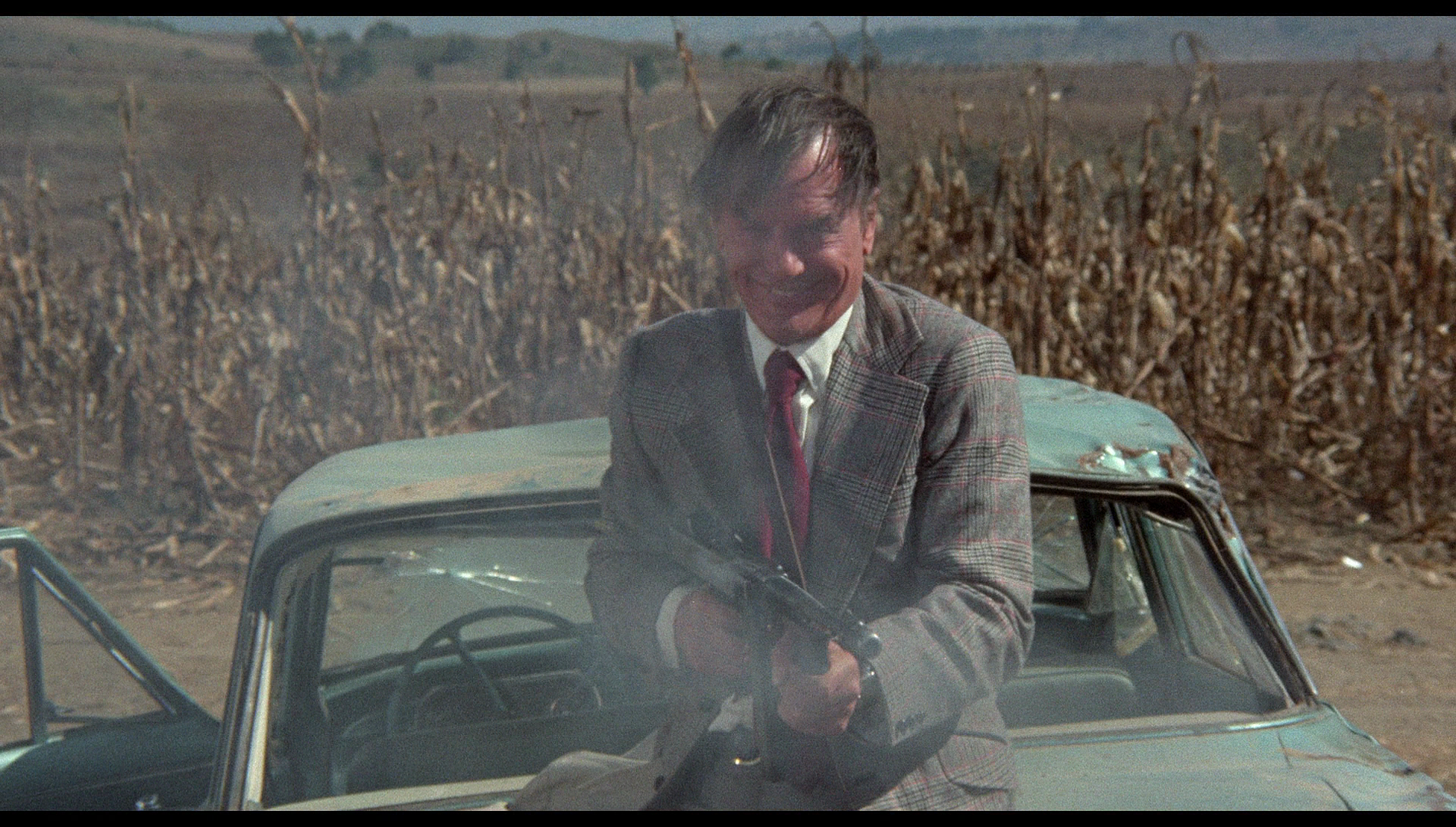 This presentation is based on a new 4k scan. The 1080p presentation takes up just under 32Gb of space on a dual-layered Blu-ray disc. The film is presented in its original aspect ratio of 1.85:1. The picture is uncut, running for 112:18mins. This presentation is based on a new 4k scan. The 1080p presentation takes up just under 32Gb of space on a dual-layered Blu-ray disc. The film is presented in its original aspect ratio of 1.85:1. The picture is uncut, running for 112:18mins.
The presentation contains an excellent level of detail: this is evident, for example, in the ripples of water on the surface of the river in the opening sequence. The muddy colour scheme of the film, shot in drab browns, tans and greens in a palette similar to Peckinpah’s Straw Dogs and Cross of Iron, is communicated very well here. (Though this film was lensed by Alex Phillips, Jr, visually it seems very similar to the Peckinpah films which were shot by the British cinematographer John Coquillon.) Contrast levels are superb: deep blacks are counterbalanced by rich, defined mid-tones and nicely-balanced highlights. The presentation is clean and free from any damage; it is also free from any harmful digital tinkering, the excellent encode ensuring that the presentation retains the structure of 35mm film. In comparison with previous Blu-ray presentations of the film, there’s a noticeable improvement in detail, and especially in the grain structure of the film – which is much more ‘true to source’ and film-like in Arrow’s new presentation, especially in motion. Some screen grabs comparing this release with the previously-released Italian Blu-ray are included at the bottom of this review.
Audio
The film is accompanied by a LPCM 1.0 track in English, with some brief moments of dialogue in Spanish. The audio track is rich and has excellent range: though it’s not a ‘showy’ track it has a very good sense of depth to it. Some previous video versions omitted the subtitles for the film’s Spanish language dialogue, including the exchanges that take place between El Jefe and Theresa, and then El Jefe and his underlings, in the film’s opening sequence. My first viewing of the film was via its screening on Moviedrome in the early 1990s. As I recall, that version of the film included subtitles for the Spanish dialogue, but the UK VHS release didn’t contain subtitles – and neither did the US LaserDisc. This presentation contains subtitles for that dialogue, and also includes optional English subtitles for the Hard of Hearing for the whole feature. These subtitles are free from errors and easy to read.
Extras
The package contains two discs.  DISC ONE contains the film and the following extras: DISC ONE contains the film and the following extras:
- An audio commentary with Stephen Prince. In this new audio commentary by Stephen Prince, the author of Savage Cinema: Sam Peckinpah and the Rise of Ultraviolent Movies (1998), Prince begins by suggesting that this film is the ‘purest’ Peckinpah picture but not the best, and he reflects on the ways in which the film’s fortunes amongst both critics and fans have changed in the years since its first release. He discusses some of the symbolism within the film in detail and comments on the context of the film’s production – for example, discussing how Peckinpah’s films changed the paradigms of editing in American cinema. It’s a breathless and well-research commentary track. - An audio commentary with Paul Seydor, Garner Simmons and David Weddle. Here, Seydor, Simmons and Weddle are featured in a commentary moderated by Nick Redman. The three authors of the essential books about Peckinpah offer a variety of insights into the film, sometimes with a conflict of opinion. It’s a great commentary track that engages with the film, exploring the extent to which it may be taken as a metaphor for Peckinpah’s relationships with the filmmaking process. The commentary has appeared on previous home video releases of the film, beginning with the MGM DVD released in the US in 2005. - Sam Peckinpah: Man of Iron (94:14). This extraordinary feature-length documentary about Sam Peckinpah was first broadcast on BBC2 in 1992. The documentary was made by Paul Joyce, who managed to get access to many of Peckinpah’s colleagues and friends, gaining an extraordinary insight into the director’s career and his life. These interviews were interspersed with plentiful clips from the films. For Peckinpah fans, the documentary has long been a ‘must watch’. Aside from the inclusion of the documentary itself, Arrow have also secured the raw interviews conducted by Joyce for the documentary, and have included these on the second disc in this set. Man of Iron was included previously, in a slightly edited version, on Criterion’s DVD release of Straw Dogs in the US; that version omitted some of the film clips, presumably owing to issues relating to rights. All of the film clips seem to be present and correct in this presentation on Arrow’s Blu-ray disc. The documentary is presented in the 1.78:1 aspect ratio. - The John Player Lecture: Sam Peckinpah (47:23). This audio recording of Peckinpah being interviewed in front of a live audience at the NFI is presented over a still photographic portrait of Peckinpah. It’s a fascinating interview, with Peckinpah talking about topics ranging from the origins and context of the opening sequence of The Wild Bunch to his films’ depiction of religion. Peckinpah is a fascinating interviewee, his anger being piqued here and there (eg, in a discussion of the dubbing of Major Dundee, 1965, after which he apologises for his brief outburst). - Kris Kristofferson songs: ‘One for the Money’ (1:26); ‘Sam’s Song’ (3:03); ‘Slouching Toward the Millennium’ (4:09); and ‘Sunday Morning’ (4:01). Recorded by Paul Joyce when Kristofferson was interviewed for Man of Iron, these clips feature Kristofferson performing four songs that have some connection with Peckinpah - Trailer (1:58) 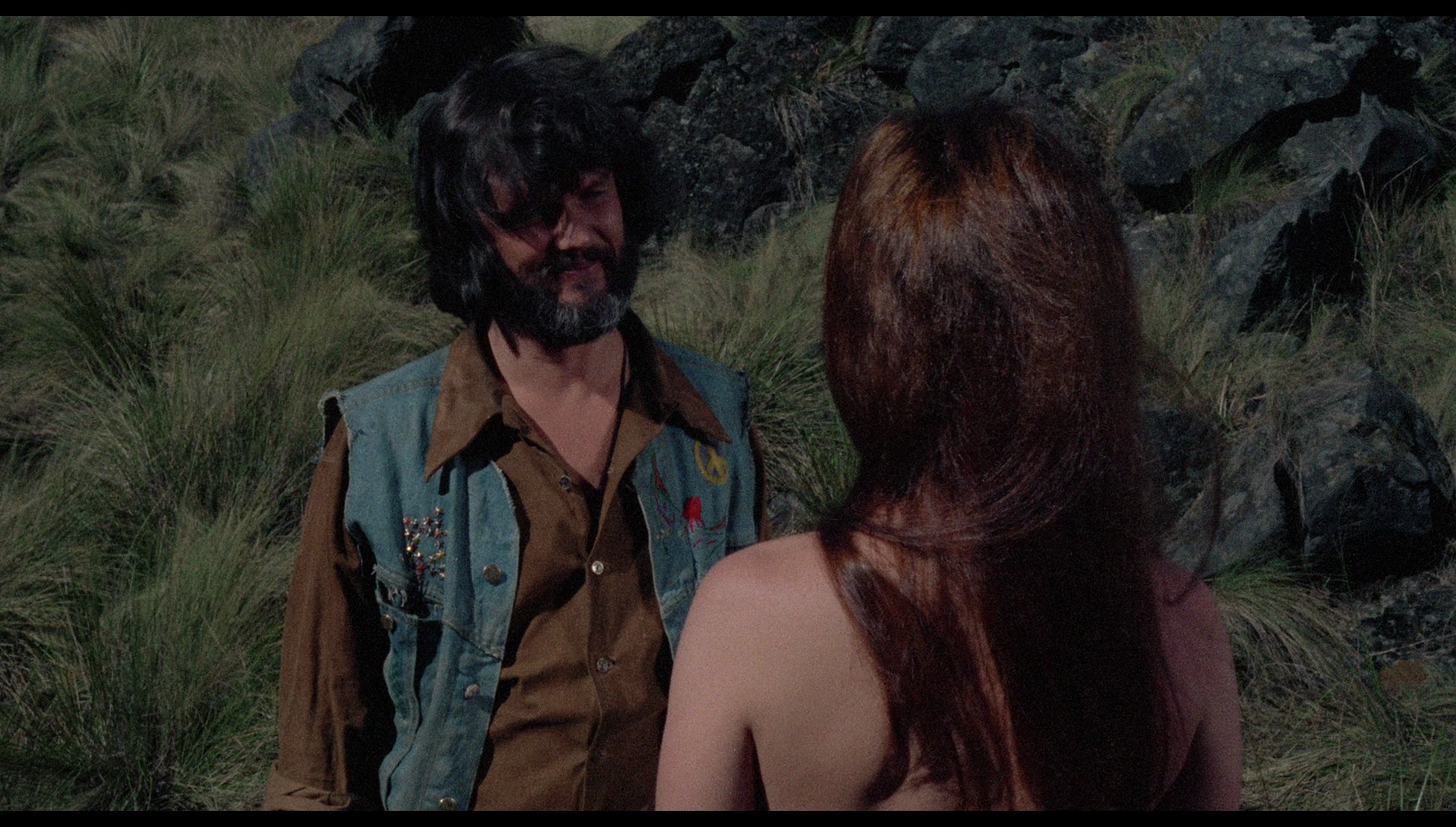 DISC TWO includes: DISC TWO includes:
- ‘Man of Iron: The Director’s Cut’ The disc offers the viewer the option to simply play the raw interviews with the participants in Paul Joyce’s documentary about Sam Peckinpah, back to back, with an introduction by the director of the documentary, Paul Joyce (3:24), or to ‘Explore’ the contents. If the viewer selects ‘Explore’, s/he will be presented with an index of the material contained on this disc: the introduction by Paul Joyce, and archival interviews – recorded during production of Joyce’s documentary about Peckinpah, Sam Peckinpah – Man of Iron – with the following subjects: - R G Armstrong (30:47), with introduction by Katy Haber (0:59) - James Coburn (39:10), with introduction by Katy Haber (1:44) - Garth Craven (20:16), with introduction by Katy Haber (2:46) - Gordon Dawson (31:22), with introduction by Katy Haber (1:32) - Michael Deeley (9:49), with introduction by Katy Haber (2:21) - Katy Haber (51:19), with introduction by Katy Haber (1:07) - Monte Hellman (30:56), with introduction by Katy Haber (1:15) - L Q Jones (42:17), with introduction by Katy Haber (2:47) - Kris Kristofferson (36:43), with introduction by Katy Haber (0:47) - Ali McGraw (31:32), with introduction by Katy Haber (1:06) - Daniel Melnick (41:26), with introduction by Katy Haber (1:21) - Bob Peckinpah (17:55), with introduction by Katy Haber (2:17) - Jason Robards (27:21), with introduction by Katy Haber (1:54) - Tom Runyon (3:54), with introduction by Katy Haber (2:03) - Mort Sahl (32:19), with introduction by Katy Haber (1:26) - Alan Sharp (30:16), with introduction by Katy Haber (1:19) - Jim Silke (50:18), with introduction by Katy Haber (1:35) - Robert Visciglia (19:32), with introduction by Katy Haber (3:12) - David Warner (42:45), with introduction by Katy Haber (1:53). The interview with Warner is newly-filmed and in 1.78:1. In each case, the interviews are prefaced by a brief, newly-filmed introduction to the subject of the interview by Katy Haber. All of these introductions by Haber are shot on digital video and in the 1.78:1 ratio. The archival interviews were shot on film and archived on tape; they are presented here in the 1.33:1 ratio of the documentary’s original broadcast. (Haber’s introduction to the interview with the late Scottish screenwriter Alan Sharp – the writer of the extraordinary Westerns Ulzana’s Raid, 1972, and The Hired Hand, 1971, as well as Peckinpah’s final film, The Osterman Weekend – is particularly pointed, with Haber saying that though she never met Sharp she felt that Alan Sharp’s comments in the original Man of Iron documentary was ‘unconscionable’ and showed ‘no understanding’ of Peckinpah’s depiction of violence. She therefore says she has ‘nothing good to say about him [Sharp]’.) At the end of the disc, some general conclusions about Peckinpah and his work are presented by Katy Haber (labeled ‘Closure’ and running 8:11). Finally, Joyce is interviewed at the end of the disc, commenting on the impact of Channel 4 on the televisual landscape of the UK and the inception of the series Cinefile; he also discusses how his documentary about Peckinpah came to be commissioned and produced. This is an incredible resource and one which devotees of Peckinpah will find endlessly fascinating, especially considering that so many of the interviewees here are sadly no longer with us to tell their stories about working with the great director. The fact that these interviews are presented in their entirety on this disc is incredible.
Overall
 Peckinpah is a filmmaker who inspires fervent devotion, and amongst Peckinpah’s fans Bring Me the Head of Alfredo Garcia has a rabid following. I find it hard to be objective about the film as Peckinpah’s films were so integral to my youth: my mother was (and remains) a devoted fan of the filmmaker, and inspired by viewings of The Wild Bunch and Pat Garrett and Billy the Kid via television broadcasts at an age at which I was much too young to fully contextualise the films but found myself hit in the gut by the visceral impact of their imagery and dialogue, during my teenage years I managed to see revival screenings of most of Peckinpah’s major films at various independent cinemas. (My family owned the pre-VRA Guild Home Video release of Straw Dogs on VHS cassette but that film was always ‘forbidden’ to me, with the promise that I would be allowed to watch it when I turned 16; of course, I managed to sneakily view the film a number of years earlier.) The obsession continued in my academic career, and whilst studying for my first degree I wrote an essay on Bring Me the Head of Alfredo Garcia, and continued onto my MA, where I wrote my Master’s level thesis on Straw Dogs a few years before the BBFC finally granted the film a home video certificate. It’s safe to say that, alongside Sam Fuller and Abel Ferrara, Sam Peckinpah is my favourite American film director, and Bring Me the Head of Alfredo Garcia is – along with Pat Garrett and Billy the Kid – my favourite of his films. Peckinpah is a filmmaker who inspires fervent devotion, and amongst Peckinpah’s fans Bring Me the Head of Alfredo Garcia has a rabid following. I find it hard to be objective about the film as Peckinpah’s films were so integral to my youth: my mother was (and remains) a devoted fan of the filmmaker, and inspired by viewings of The Wild Bunch and Pat Garrett and Billy the Kid via television broadcasts at an age at which I was much too young to fully contextualise the films but found myself hit in the gut by the visceral impact of their imagery and dialogue, during my teenage years I managed to see revival screenings of most of Peckinpah’s major films at various independent cinemas. (My family owned the pre-VRA Guild Home Video release of Straw Dogs on VHS cassette but that film was always ‘forbidden’ to me, with the promise that I would be allowed to watch it when I turned 16; of course, I managed to sneakily view the film a number of years earlier.) The obsession continued in my academic career, and whilst studying for my first degree I wrote an essay on Bring Me the Head of Alfredo Garcia, and continued onto my MA, where I wrote my Master’s level thesis on Straw Dogs a few years before the BBFC finally granted the film a home video certificate. It’s safe to say that, alongside Sam Fuller and Abel Ferrara, Sam Peckinpah is my favourite American film director, and Bring Me the Head of Alfredo Garcia is – along with Pat Garrett and Billy the Kid – my favourite of his films.
So I find it hard to be objective about this release. Then again, most people purchasing Arrow’s new Blu-ray are likely to be fans of the film already, I would imagine. Truly, the film is one of the gems of American filmmaking of the 1970s: a brutal, nihilistic picture that is also deeply blackly comic and at least partly autobiographical (in terms of how much of Peckinpah is within the character of Bennie, rather than – of course – in terms of the narrative events depicted in the film). It’s a beautifully shot film, though the use of crosscutting and multispeed photography in the picture sometimes feels a little like a pastiche of Louis Lombardo’s groundbreaking work on The Wild Bunch – but this is something that could be said about a number of Peckinpah’s post-The Wild Bunch films. Arrow’s new Blu-ray release is, it’s fair to say, far and away the best release this film has had on home video so far. Whilst the previous Blu-ray releases were perfectly acceptable, Arrow’s new presentation is a clear improvement, and the film is supported by some absolutely superb contextual material, both old and new. The second disc containing extended interviews conducted by Joyce for the production of the Man of Iron documentary is beguiling and worth the price of admission on its own. Though we’re only in January, this is clearly one of the best home video releases of the year. References: Compo, Susan A, 2009: Warren Oates: A Wild Life. The University Press of Kentucky Yergin, Dan, 1971: ‘Peckinpah’s Progress: From blood and killing in the Old West to siege and rape in rural Cornwall’. New York Times. [Online.] http://www.nytimes.com/1971/10/31/archives/peckinpahs-progress-from-blood-and-killing-in-the-old-west-to-siege.html?_r=0 Comparison with Italy’s Koch Media Blu-ray release of the film. Koch Media Blu-ray 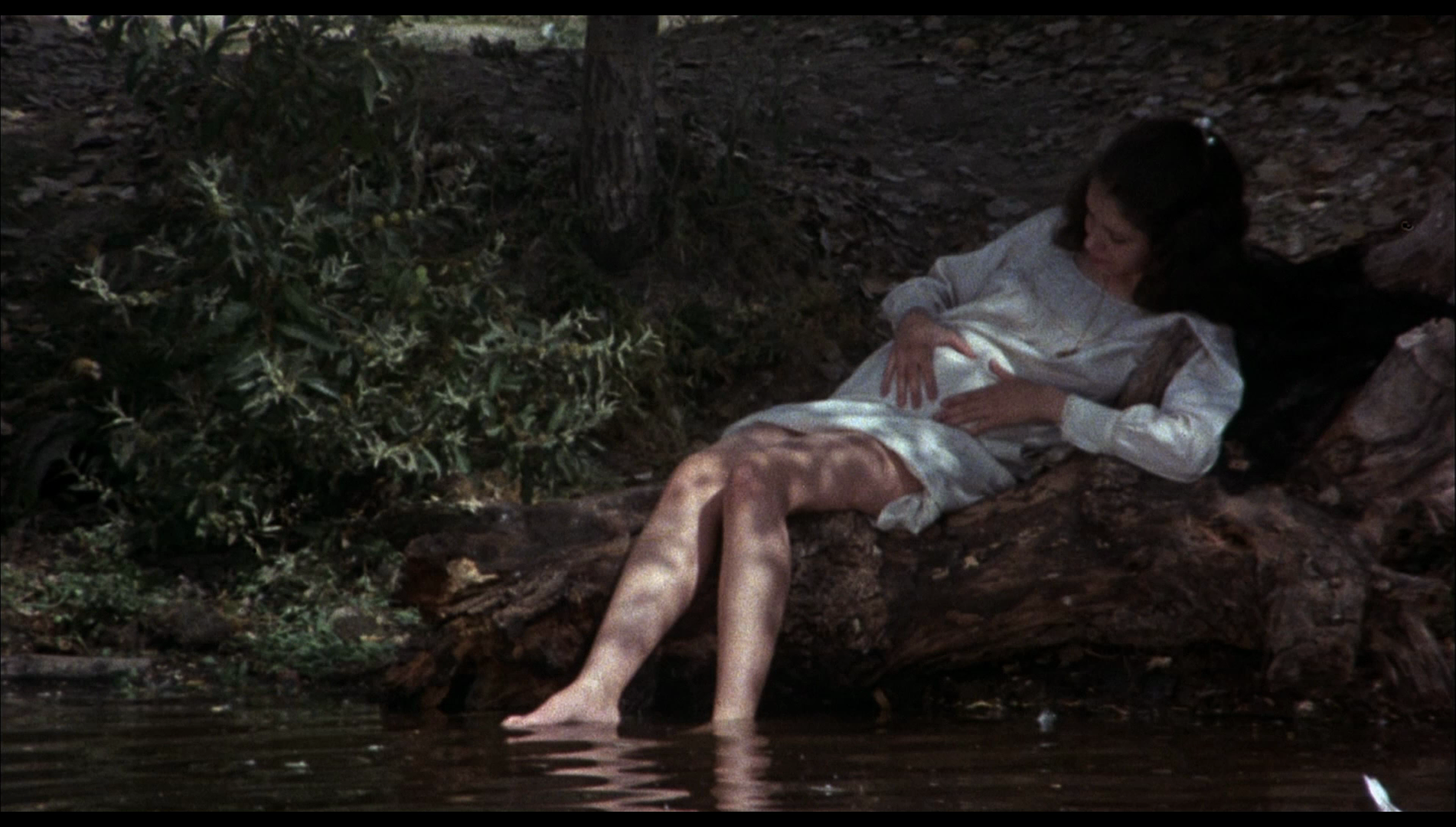
Arrow’s new Blu-ray 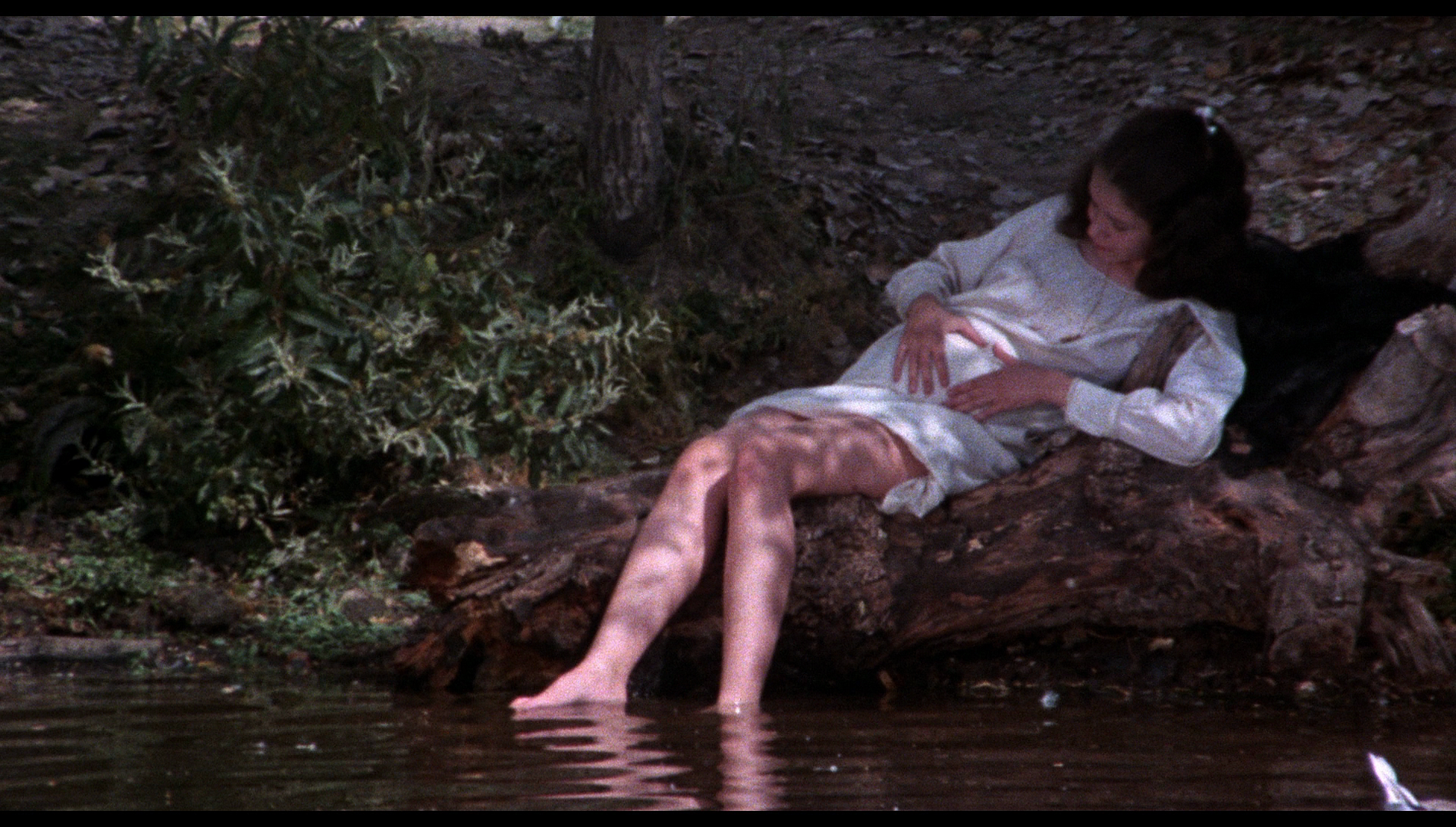
Koch Media Blu-ray 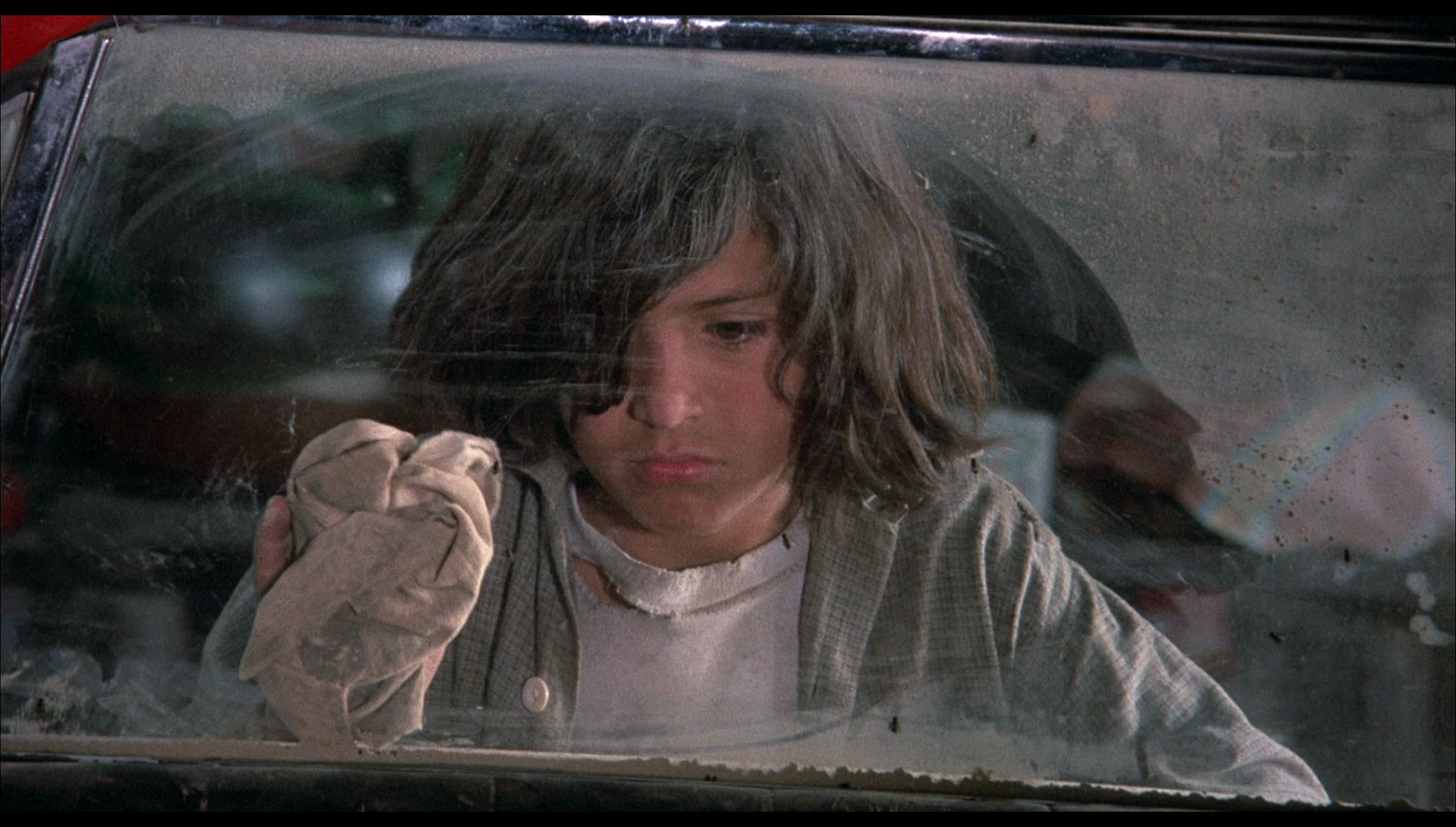
Arrow’s new Blu-ray 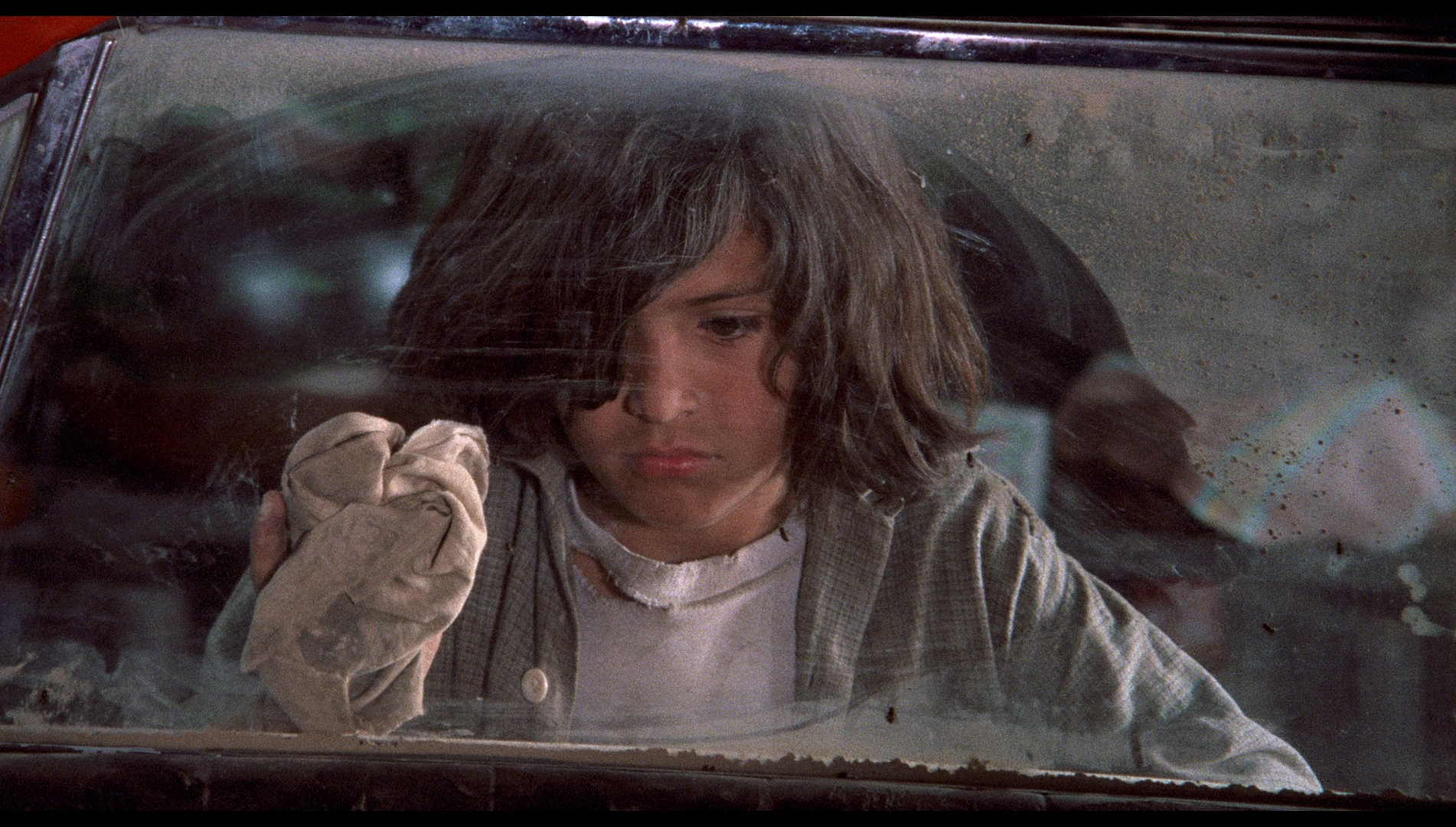
Koch Media Blu-ray 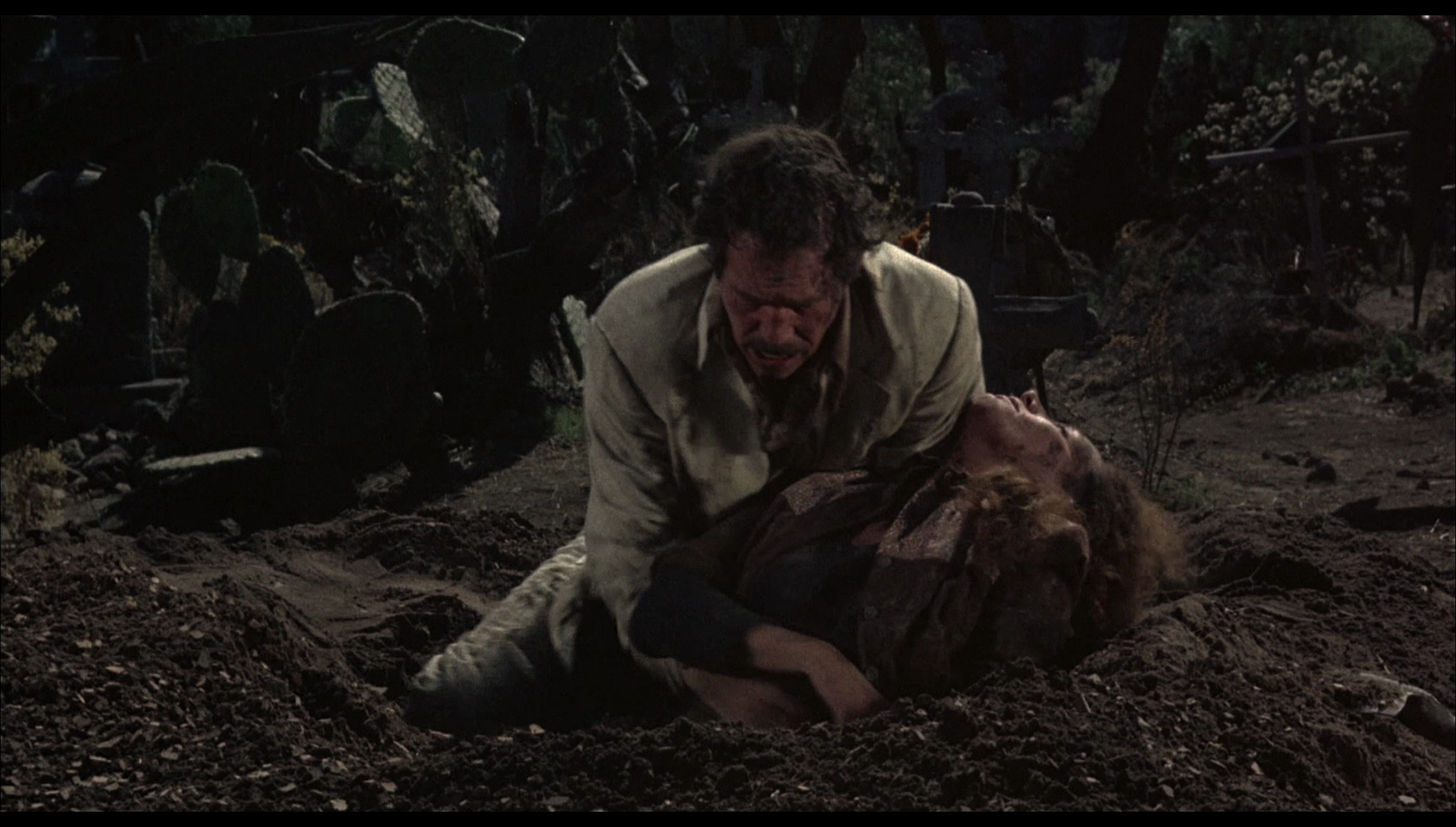
Arrow’s new Blu-ray 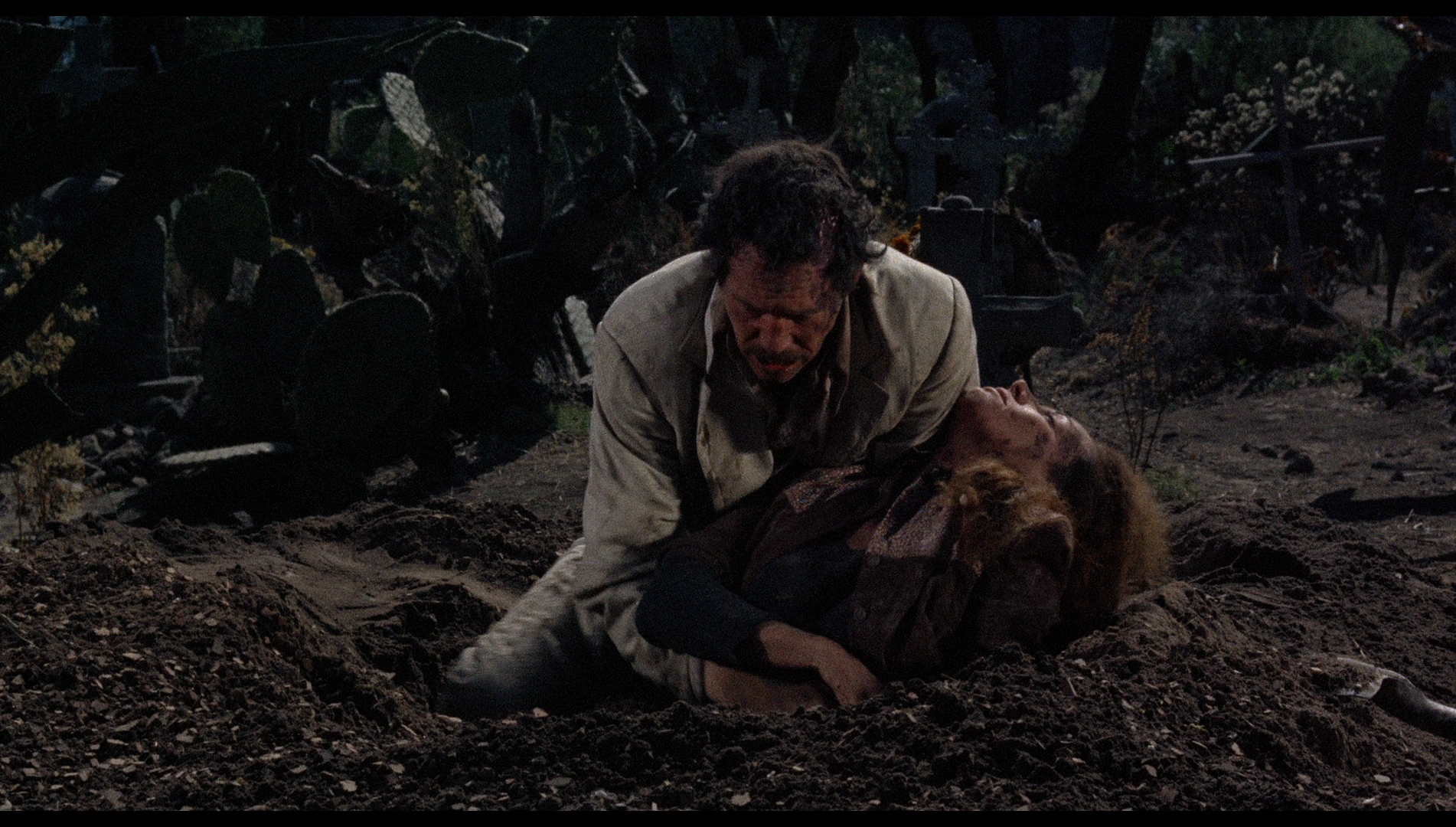
Koch Media Blu-ray 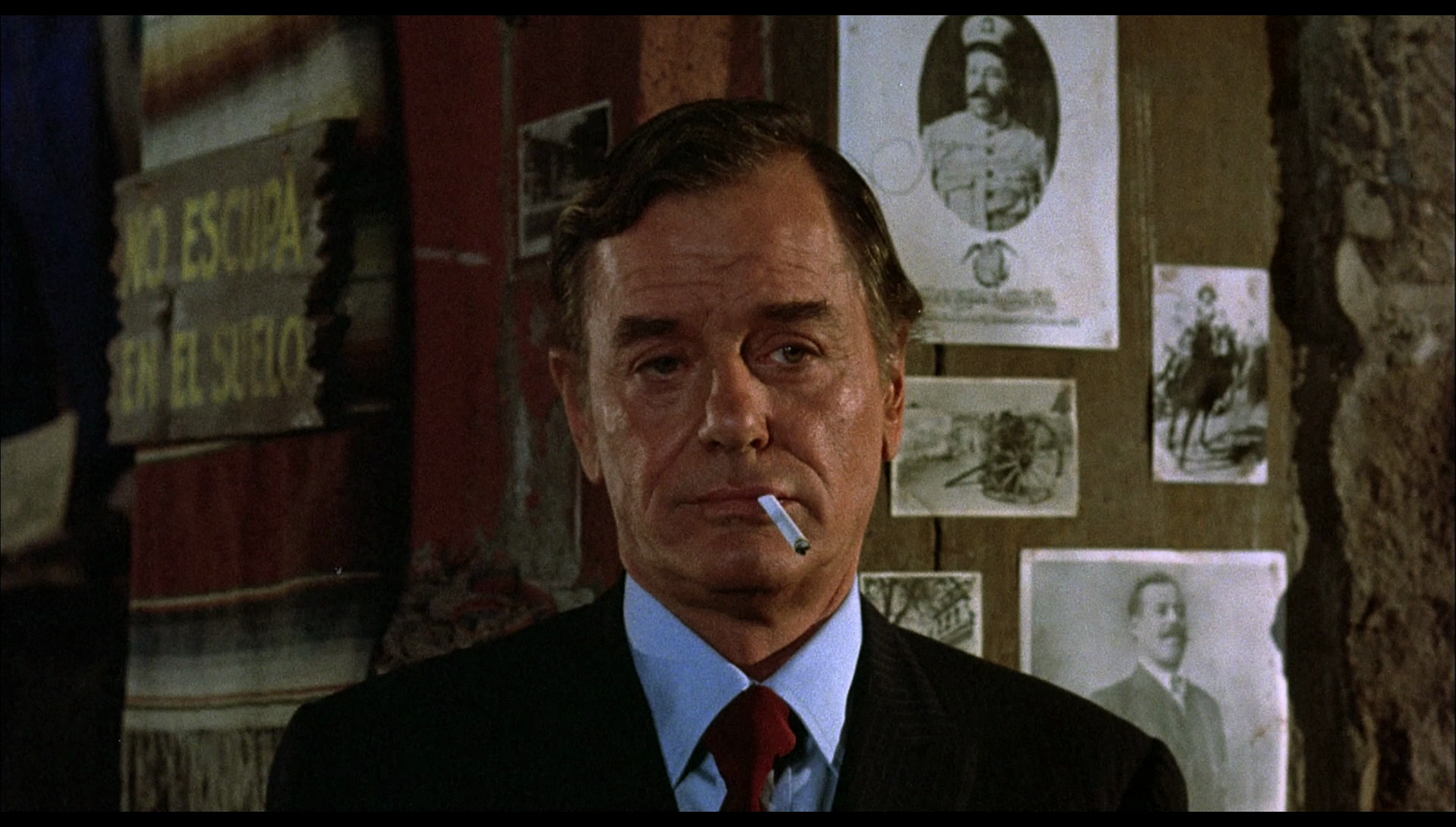
Arrow’s new Blu-ray 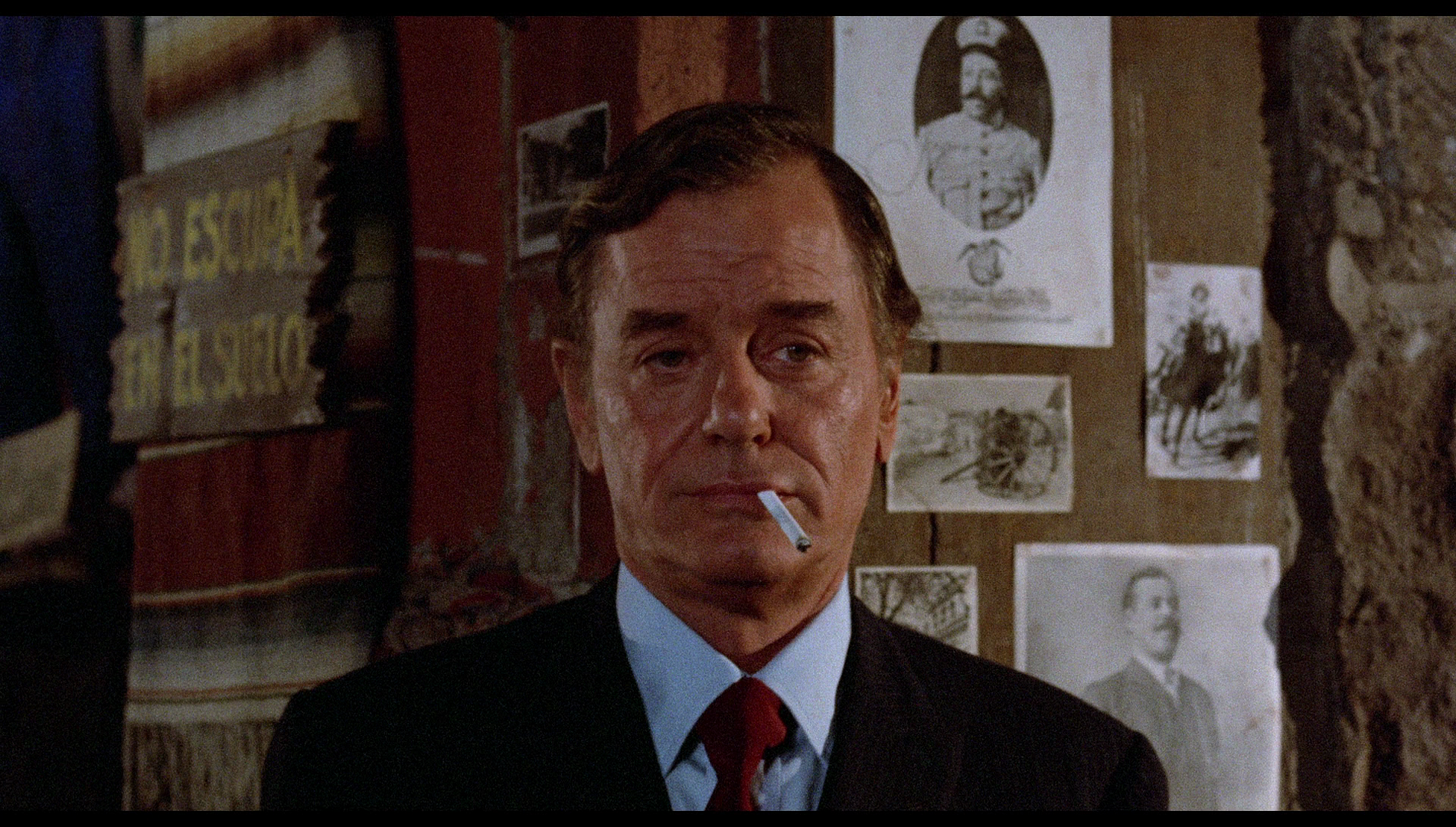
Koch Media Blu-ray 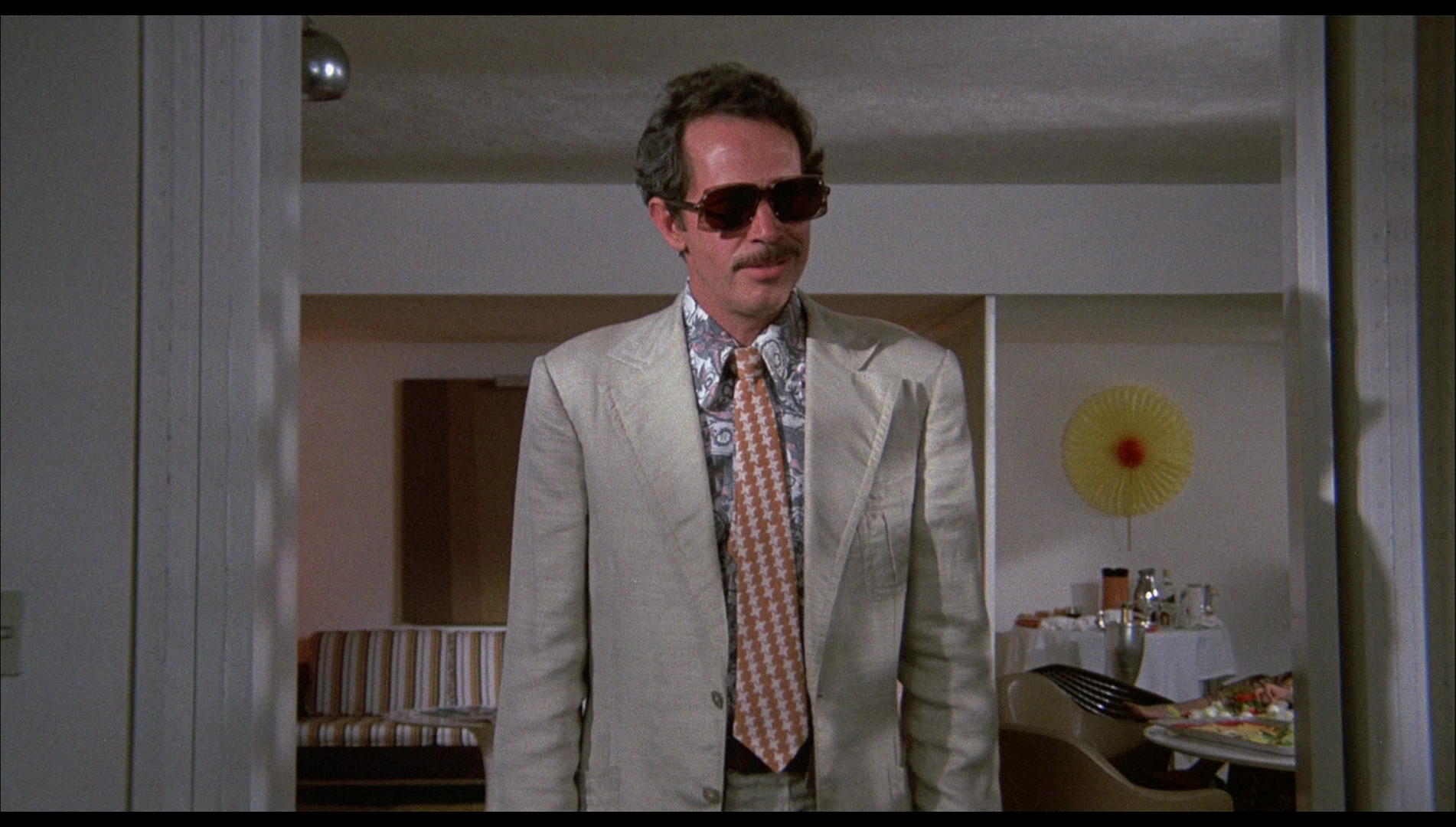
Arrow’s new Blu-ray 
More large grabs from Arrow’s new Blu-ray: 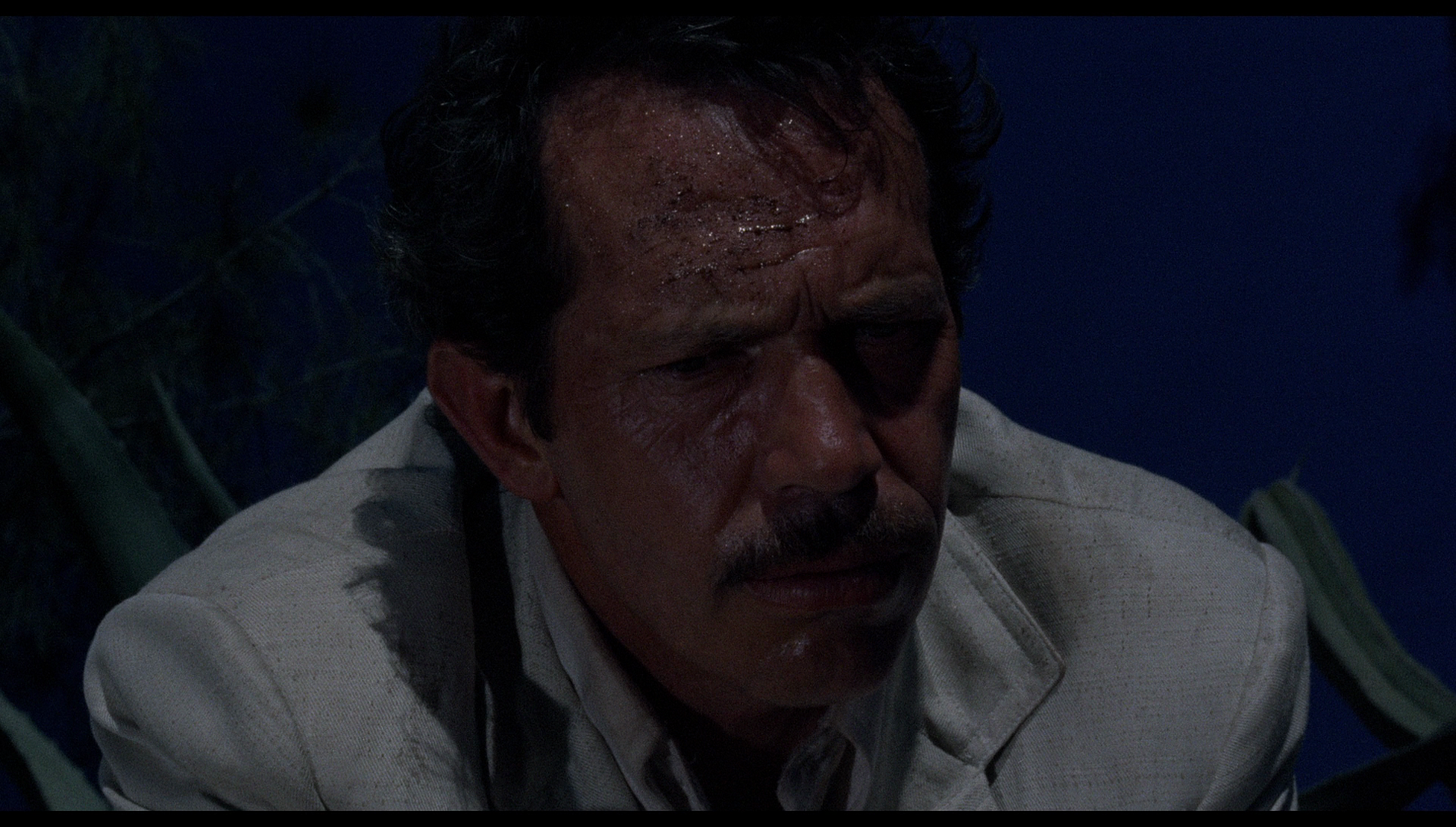
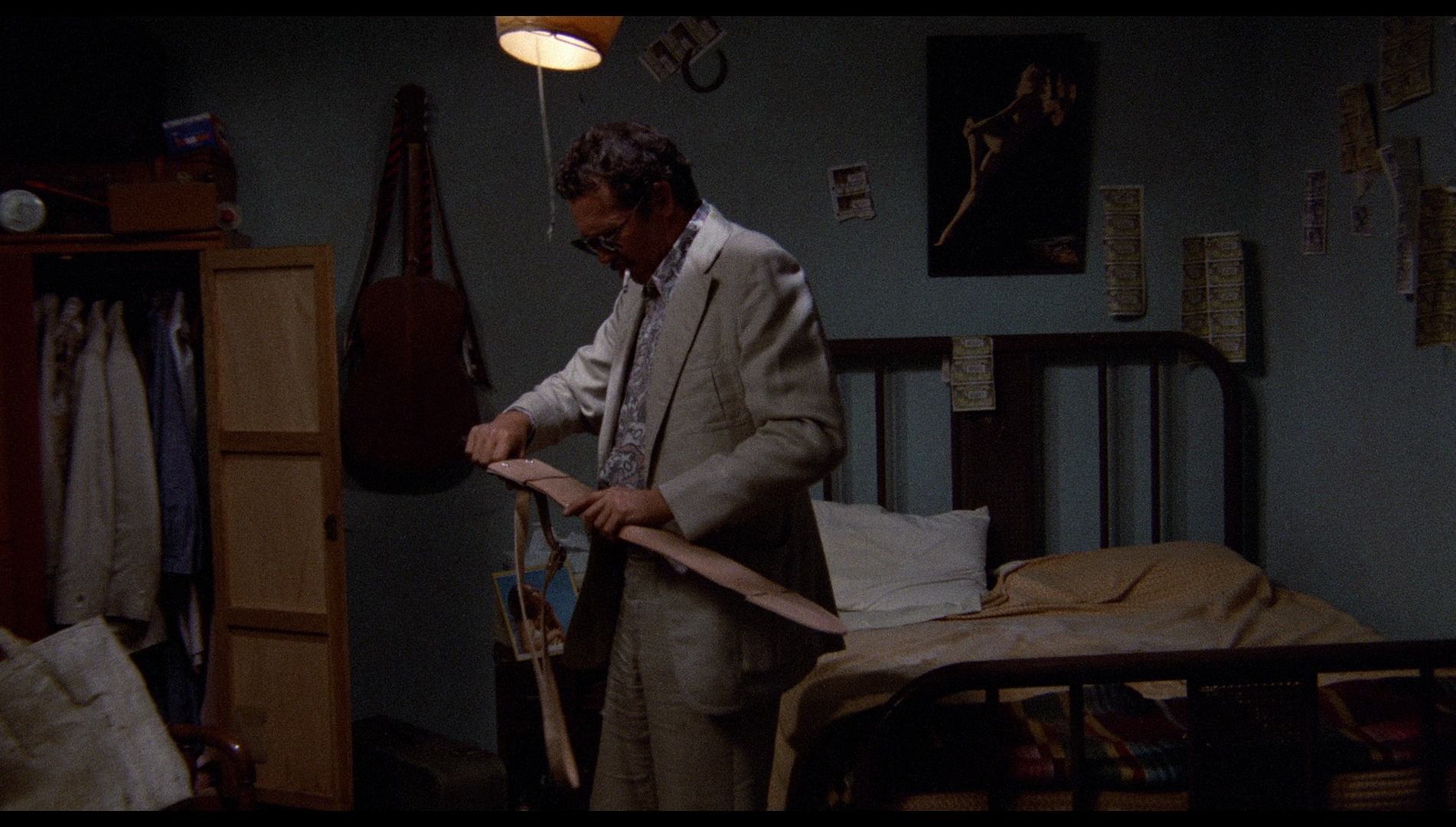
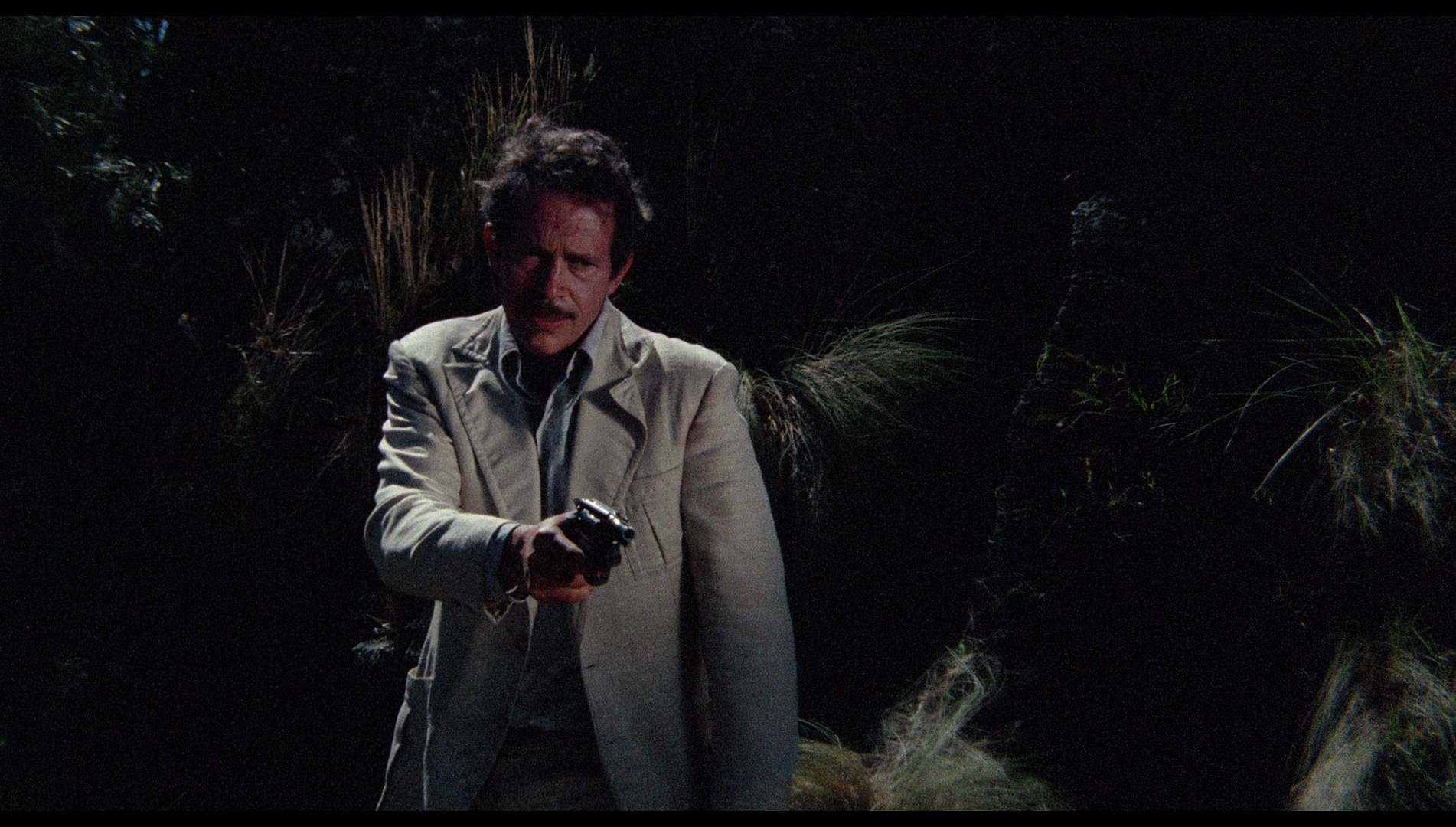
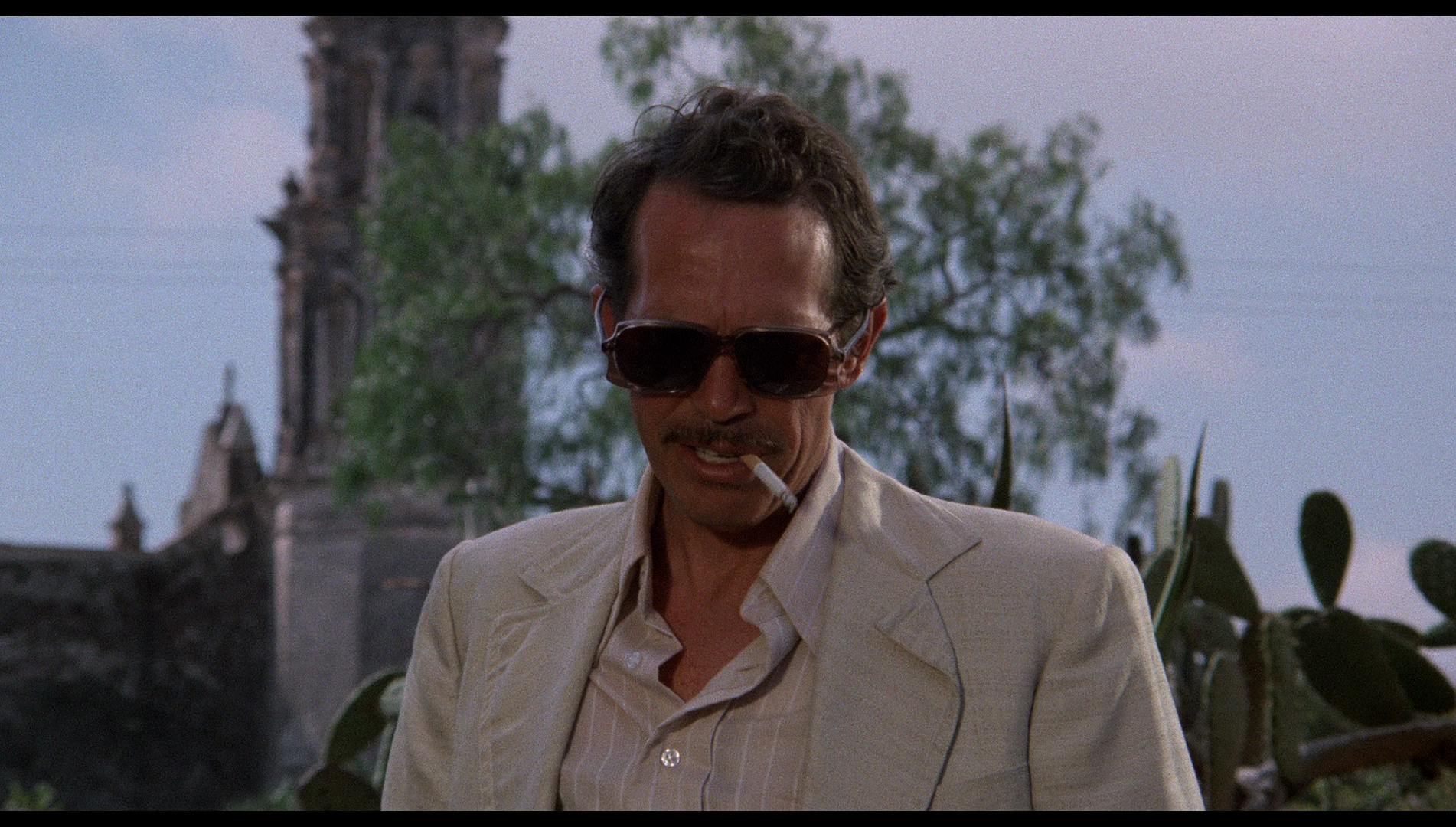
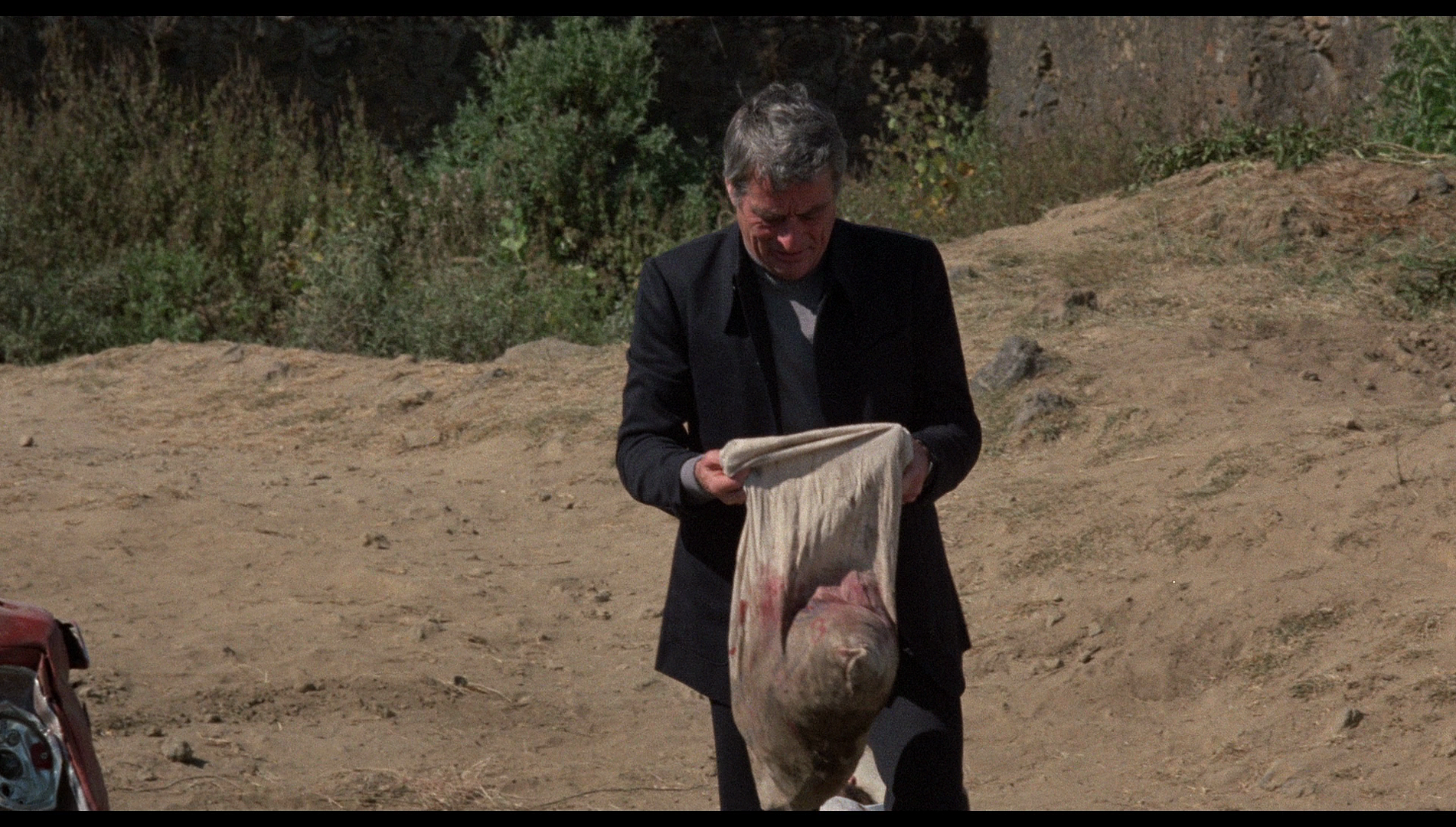


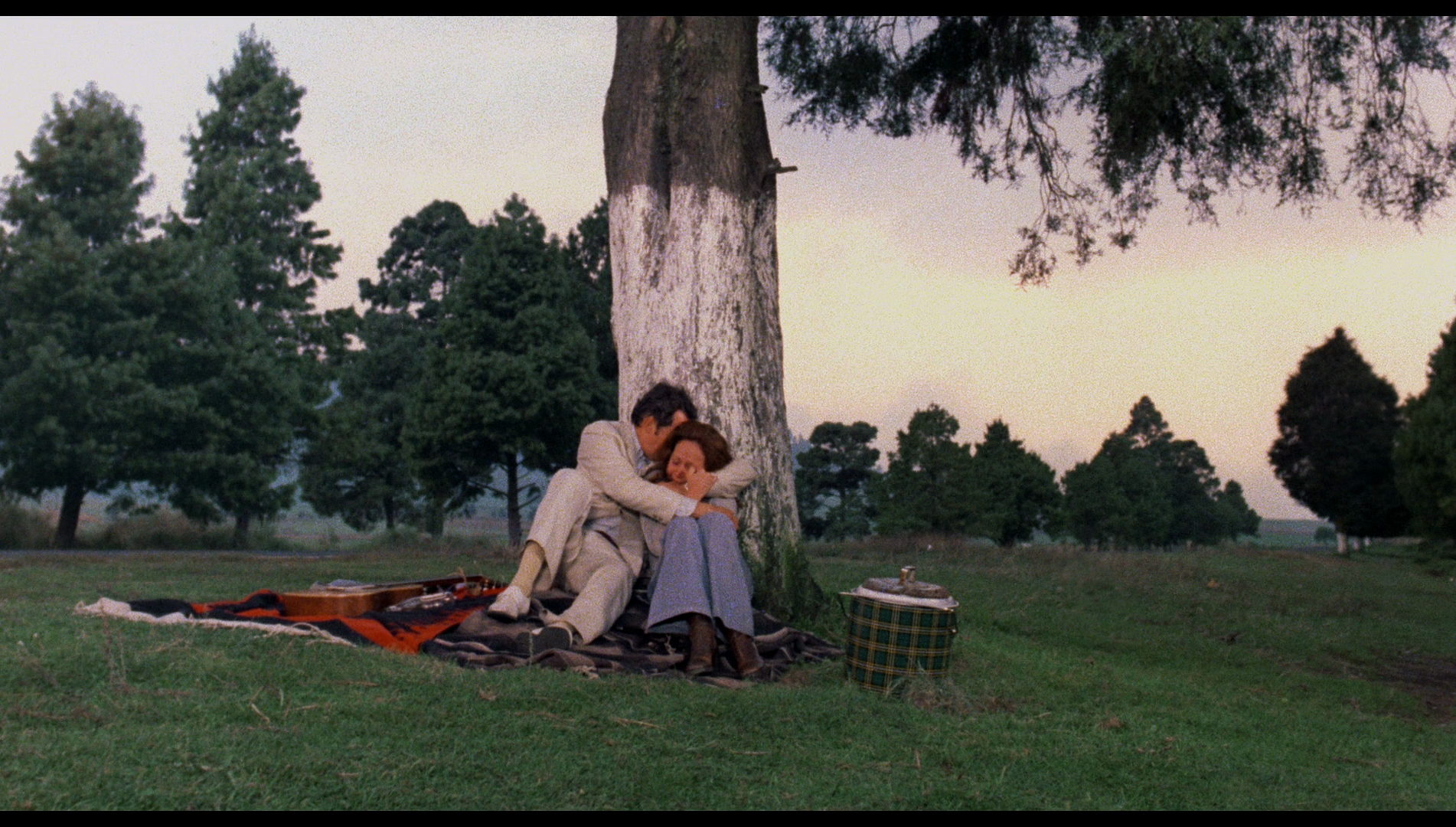
|
|||||

|